China is a large country in eastern Asia. It is the world’s second largest country in population with about 1.4 billion people—approximately 20 percent of all the people in the world. Only India has more people. China is the third largest country in area. Only Russia and Canada have more territory. China is also one of the world’s oldest countries, with a rich history that stretches over thousands of years.
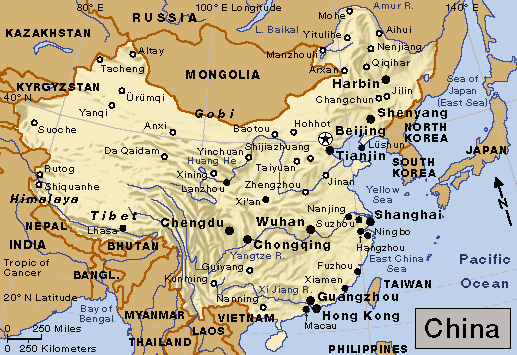
The Chinese call their country Zhongguo, which means Middle Country. This name probably came from the ancient Chinese belief that their civilization was at the geographical center of the world and was the most cultured. The English name China probably came from Qin << chihn >>, the name of an early Chinese dynasty (series of rulers from the same family).
More than 90 percent of China’s people live in the eastern half of China, which has most of China’s major cities and nearly all the land suitable for farming. Western China, by contrast, has far fewer people and resources. It is home to many of the country’s minority groups.
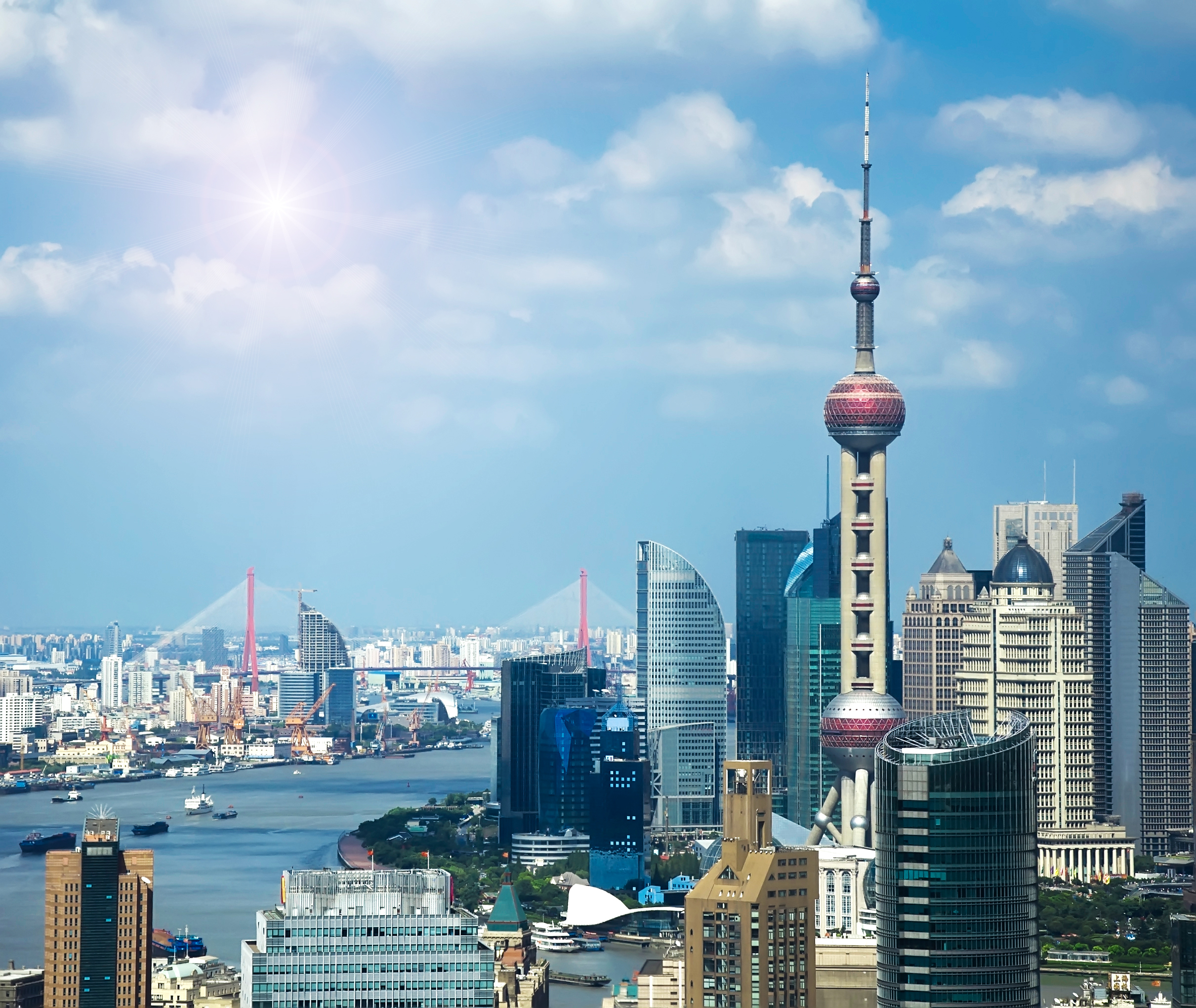
Until recently, agriculture had always been the chief economic activity in China. Today, less than half of the people live in rural villages, and only about a quarter of all workers are farmers. China has some of the world’s largest cities. They include Shanghai and Beijing (also spelled Peking), the nation’s capital.
China is one of the world’s oldest living civilizations. Its written history goes back about 3,500 years. The Chinese were the first to develop the compass, paper, and porcelain. They undertook huge construction projects, such as the Great Wall. Over the centuries, Japan, Korea, Vietnam, and other Asian lands borrowed from Chinese art, language, literature, religion, and technology.
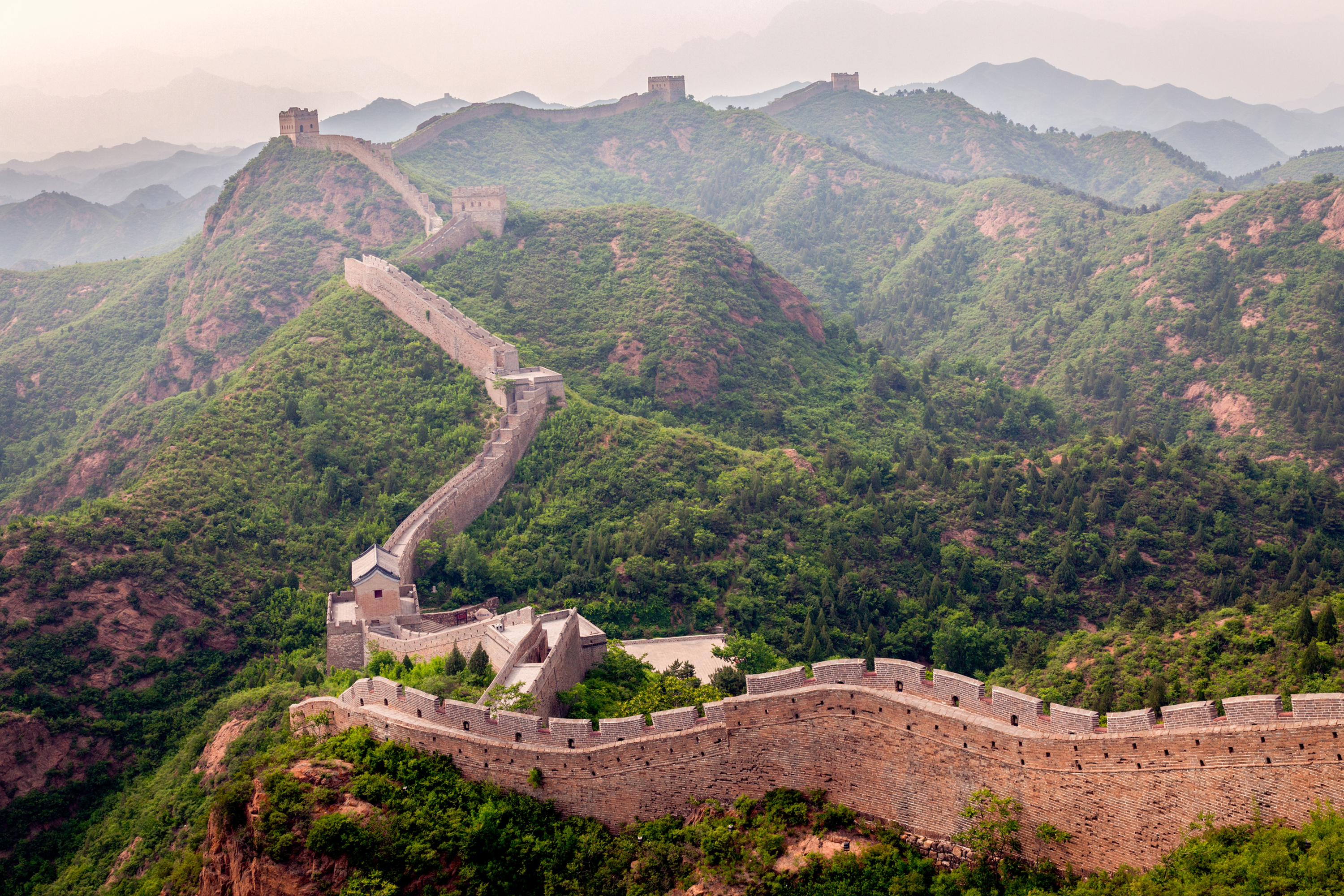
In early times, the country that is now China was divided into small states, which were sometimes allied and sometimes at war. In 221 B.C., the Qin state conquered the other kingdoms and created a strong central government, forming the first united Chinese empire. Such empires continued to rule for more than 2,000 years. Chinese empires expanded the country’s territory, built great cities, and sponsored magnificent works of literature and art. Nomadic groups from the north sometimes conquered all or part of the country. But the invaders generally adopted more from Chinese civilization than the Chinese adopted from them.
In the 1800’s, China’s last empire, the Qing, began to weaken. In 1911, revolutionaries overthrew the Qing, and the next year, China became a republic. However, the Nationalist Party, which ruled the republic, never established effective government over all of China. In 1949, the Chinese Communist Party defeated the Nationalists and set up China’s present government. The Communists called the country Zhonghua Renmin Gongheguo (People’s Republic of China). The Nationalists fled to the island of Taiwan, where they reestablished their government. The People’s Republic claims that Taiwan should be part of its territory. This article discusses only the People’s Republic of China. For information about Taiwan, which Nationalists call the Republic of China, see the World Book article on Taiwan.
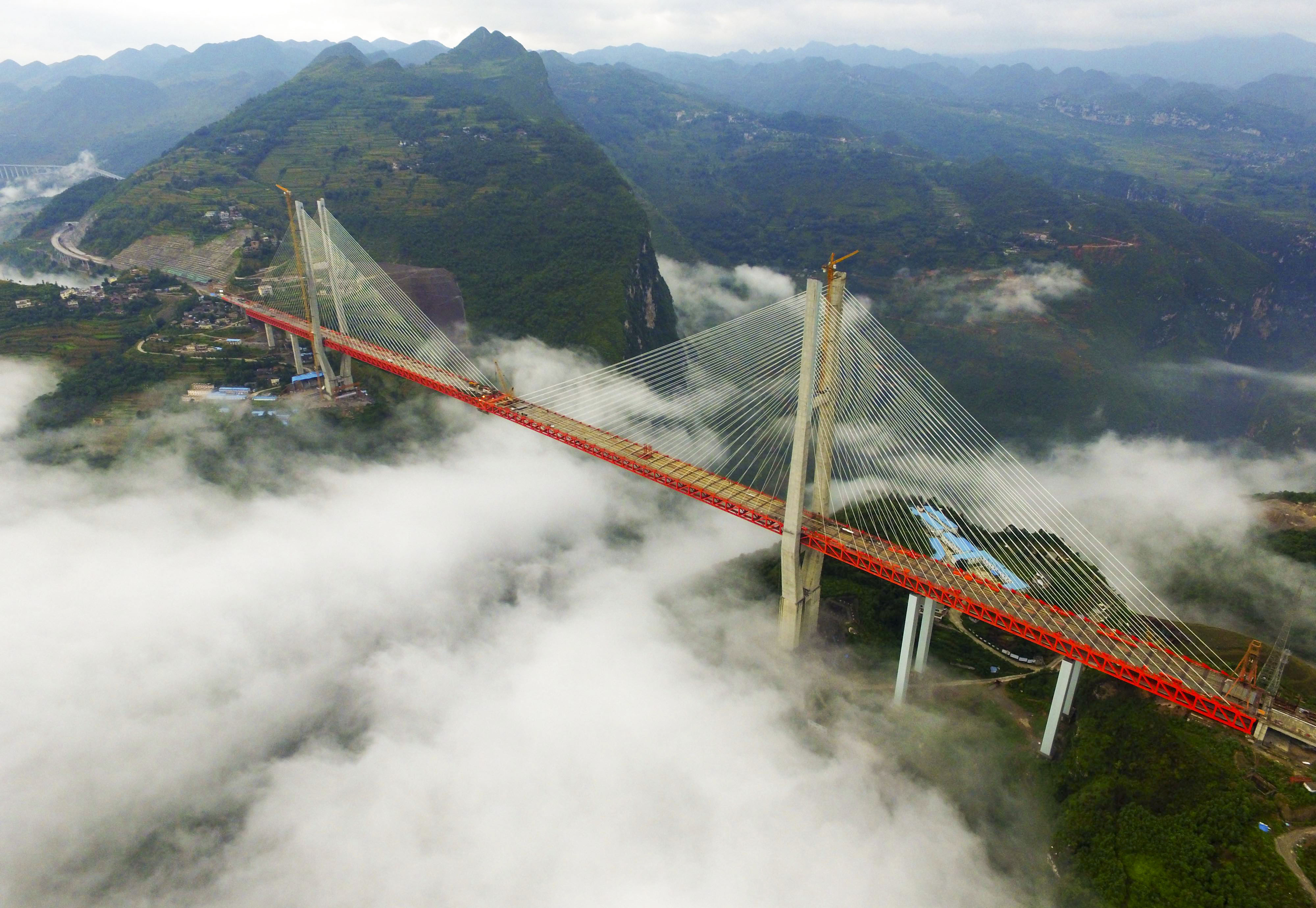
The Communists made many major changes in China. They placed all important industries under state ownership and direction, and they redistributed agricultural land to the peasants. The government also took control of most trade and finance. In the late 1900’s, the Communists began to loosen their grip on the nation’s economy and to allow more free enterprise. China has one of the world’s largest economies, and many of its people prosper. However, the majority of people still live modestly.
Government
China’s government is dominated by the Chinese Communist Party, the military, and a branch of government known as the State Council. The Communist Party is the most powerful group. People holding positions in the party or the government are called cadres or ganbu.
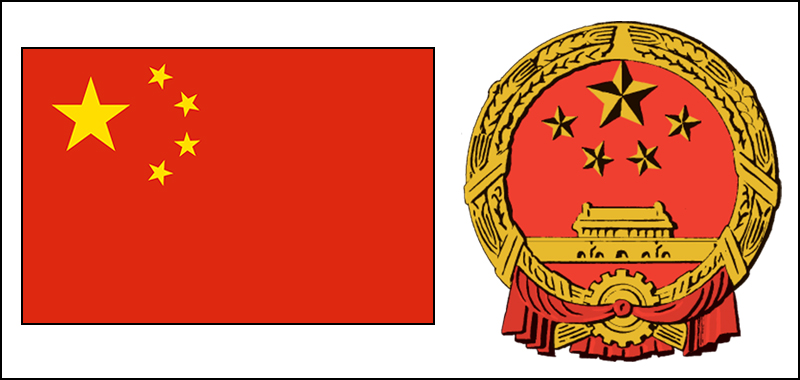
China's national anthem
The Communist Party.
China remains a one-party state. A number of minor political parties exist, but they have no power. Tens of millions of Chinese citizens belong to the Chinese Communist Party (CCP), but members make up only a small percentage of the total population. In 2002, the party began allowing business owners to join. Admitting business owners was a major change because Communists traditionally had considered the owners of businesses and other means of production to be enemies of the working class. Although the party still supports socialist ideals, it has recognized that business owners play an important role in modern China.
The Communist Party has four main administrative bodies: the National Party Congress, the Central Committee, the Politburo (Political Bureau), and the Secretariat. The National Party Congress has about 2,300 representatives, selected by party members throughout the nation. The Central Committee consists of leading party members and is elected by the National Party Congress. The Central Committee has about 200 voting members and more than 170 alternates. The Politburo has about 25 members, who are top party leaders elected by the Central Committee. The Standing Committee is a smaller group within the Politburo and is made up of some of the most important members of the Communist Party. In addition, several powerful leaders belong to the Secretariat, which is chosen by the Central Committee.
The Communist Party’s constitution states that the National Party Congress and the Central Committee are the most important bodies, but they have little real power. In general, they automatically approve party policies and guidelines set by the Politburo and its Standing Committee. The Secretariat is responsible for carrying out the day-to-day activities of the party.
The highest post in the Communist Party is that of general secretary, who serves as head of the Secretariat. Sometimes other high-ranking government officials have held more power. For example, Deng Xiaoping was China’s most influential leader from the late 1970’s until the early 1990’s, even though Hu Yaobang and others held the post of general secretary. Since 2012, however, Xi Jinping has been the general secretary, and he is also the nation’s paramount leader.
National government.
China’s Constitution establishes the National People’s Congress as the highest government authority. Members of the National People’s Congress are elected by local and regional people’s congresses and by the armed forces. The members of the National People’s Congress serve five-year terms. The chief function of the congress is legislative. Its powers include adopting laws, approving the national budget, and appointing government officials. A standing committee of about 150 members handles the work of the congress when it is not in session.
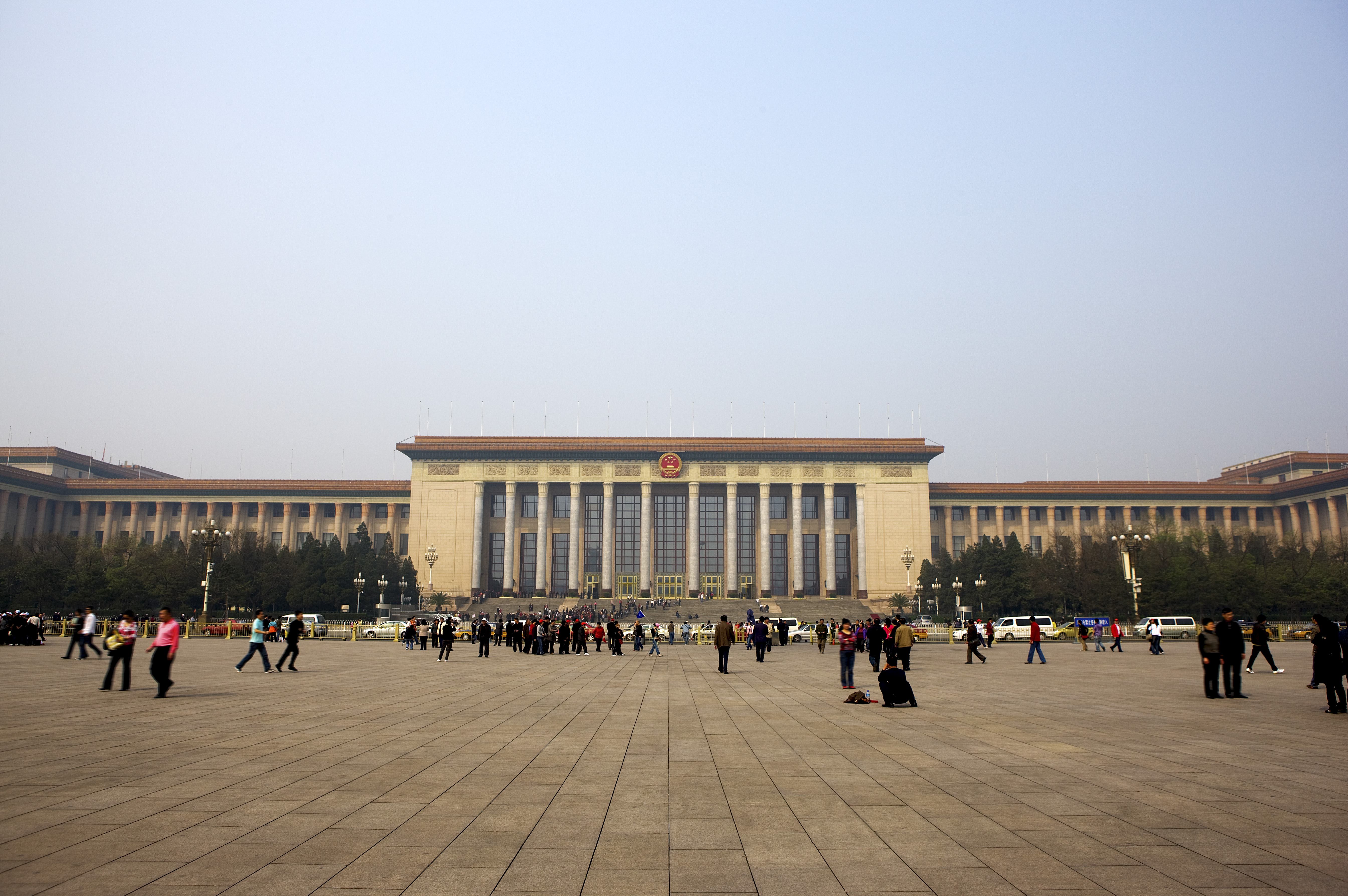
The State Council serves as the executive branch. It carries on the day-to-day affairs of the government. The council is led by the premier, China’s head of government. The premier is chosen by the National People’s Congress, upon nomination by the president. The president’s duties are largely ceremonial. The premier is assisted by vice premiers, state councilors, and a number of ministers and heads of special commissions. The ministers are in charge of government departments, such as the ministries of defense, education, and finance.
Political divisions.
Mainland China has 33 major political divisions—22 provinces, 5 autonomous (self-governing) regions, 4 nationally governed municipalities, and 2 special administrative regions. The government of the People’s Republic of China also claims Taiwan and regards the island as its 23rd province, but Taiwan remains effectively independent.
China’s autonomous regions—Guangxi, Inner Mongolia, Ningxia, Tibet, and Xinjiang—have many people who belong to the country’s minority ethnic groups. Although the regions are called autonomous, they are actually governed much like the rest of the nation. The nationally governed municipalities—Beijing, Chongqing, Shanghai, and Tianjin —are large metropolitan areas that are administered by the national government. Each of these municipalities consists of an urban center and a rural area. The special administrative regions are Hong Kong and Macau, which were controlled for many years by the United Kingdom and Portugal, respectively. Hong Kong and Macau have their own executive, legislative, and judicial bodies. China handles their defense and foreign policy.
China has three levels of local government. The major political units are divided into more than 300 prefectures and more than 650 major cities. Counties, other cities, and districts of major cities make up the next level. The counties are subdivided into thousands of townships and towns. Each political unit has a people’s congress with a standing committee, and an executive body patterned after the State Council.
Courts
in China do not function as a completely independent branch of government as they do in many Western nations. Instead, the courts base their decisions largely on the policies of the Communist Party.
The highest court in China is the Supreme People’s Court. It interprets the national laws and supervises the local people’s courts. It also makes the final judgment on cases that have been appealed from lower courts. The Supreme People’s Procuratorate hears cases that involve violations by government officials and sees that the national Constitution and the regulations of the National People’s Congress are observed.
The armed forces
of China are jointly commanded by the Central Military Commission of the Communist Party and the Central Military Commission of the government. China has an army, navy, and air force, which together make up the People’s Liberation Army (PLA). The PLA has more than 2 million male and female regular members. There are also about 1 million army reserves and military police. Millions of men and women serve in China’s militia (citizens’ army). Men and women from 18 to 22 years of age may be drafted for military service.
The armed forces hold enormous political power in the People’s Republic of China. Military officers make up a large percentage of the members on the Communist Party’s Central Committee. In addition to its military duties, the People’s Liberation Army helps carry out party policies and programs.
People
Population.
About a fifth of the world’s people live in China. Shanghai is China’s largest city, and one of the world’s largest as well. Beijing, the country’s capital, is the second largest city. More than 100 Chinese cities each have more than a million people. About 40 percent of the country’s people live in rural villages and small towns. The population is concentrated in eastern China. Less than 10 percent of the people live in the western half of the country.

China’s government has seen the country’s population as both a resource and a burden. China’s huge work force makes its economy one of the most powerful in the world. But in the past, without limits placed on population growth, far more children would have been born than China could have adequately fed, housed, educated, or employed. Strict population control policies introduced in 1979 encouraged people to postpone marriage until their late 20’s and usually to have only one child. The policies were relaxed somewhat in the mid-2010’s and early 2020’s to allow two, and later three, children. By the start of the 2020’s, however, China’s birth rate had become so low that without an increase, it would not produce enough young people to support the nation’s rapidly growing elderly population, potentially creating an economic crisis. In 2022, China’s population shrank for the first time since the early 1960’s. This change marked the beginning of what population experts predicted would be a long-term population decline.
Nationalities.
About 92 percent of the people of China belong to the Han nationality. The rest of the population consists of more than 50 minority groups, including Kazakhs, Mongols, Tibetans, Uyghurs (also spelled Uighurs), and Zhuang. The different nationality groups are distinguished chiefly by language and culture.
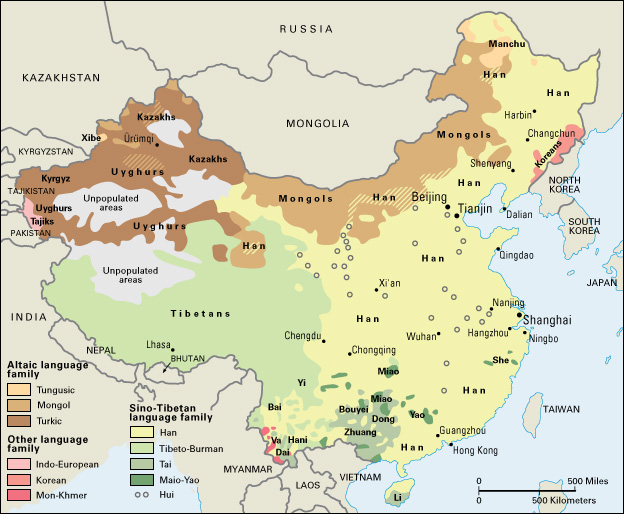
Most of China’s minority peoples live in the border regions and western China. A few groups, such as the Mongols in the north and the Kazakhs in the northwest, have a long tradition of herding sheep, goats, and other livestock. Some are still nomads, moving from place to place during the year to feed their herds on fresh pastures. The Uyghurs raise livestock and grow crops on oases in the deserts of northwestern China. The Tibetan people practice simple forms of agriculture and herding in China’s southwestern highlands. Many Koreans are farmers near the border with North Korea.
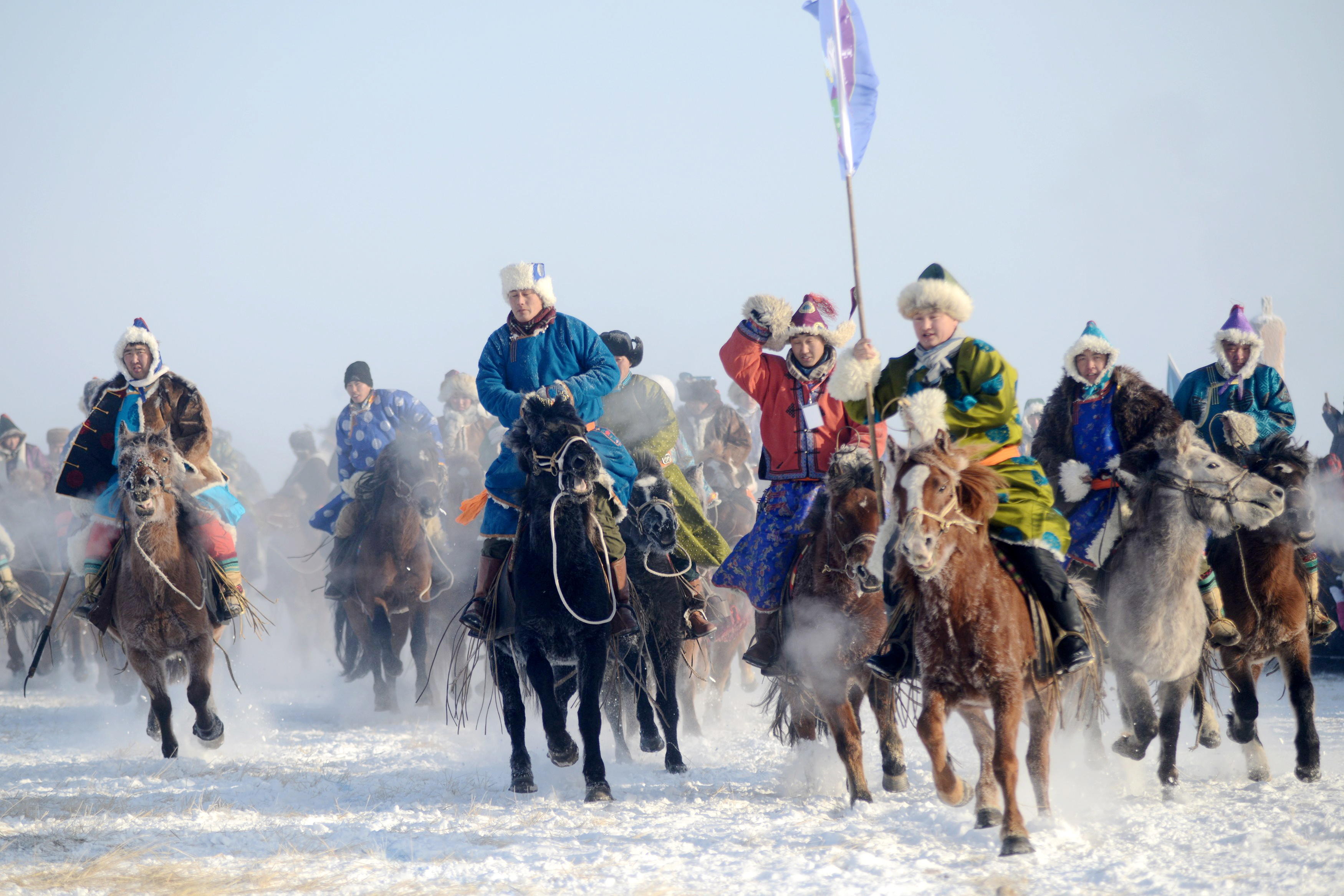
A number of minority groups inhabit the far southern parts of China. Some of these groups, such as the Zhuang, live much like their neighbors, the Han. Other minority groups are related to the peoples of Laos, Myanmar, Thailand, or Tibet. Many of these people, who live in less developed mountain areas, retain their traditional language and way of life.
Languages.
Chinese, the native language of the Han, is actually a group of closely related languages. Early in the 1900’s, China’s government made northern Chinese, which was spoken in Beijing, the official language. This version of Chinese is often called Mandarin in English, but the Chinese call it Putonghua (common language). Most people in northern China speak Putonghua, and it is the language of instruction in almost all schools. Other varieties of Chinese include Northern Min (spoken in northern Fujian province), Southern Min (spoken mainly in Guangdong, Hainan, and southern Fujian), Wu (spoken in Shanghai, Jiangsu, and Zhejiang), and Yue or Cantonese (spoken in Guangdong and Guangxi). Each language has several local dialects.
Although each version of Chinese has its own pronunciation, all Chinese is written in a similar way. The Chinese writing system uses characters instead of an alphabet. Each character is a symbol that represents a word or part of a word. For more information, see Chinese language.
The minority peoples of China speak many languages, including Korean, Mongolian, Uyghur (also spelled Uighur), and Zhuang. Many groups use their own language in their schools and publications. Many members of China’s minority groups learn Chinese as a second language. A few minority groups speak Chinese as their primary language.
Way of life
Family life
has always been extremely important in Chinese culture. For thousands of years, the Chinese people practiced loyalty to family, obedience to the father, and reverence for ancestors. Chinese philosophy and religion emphasized these values. In the mid-1900’s, the Communists tried to replace loyalty to the family with loyalty to the work group. Other social and economic changes in the late 1900’s further disrupted traditional family values.
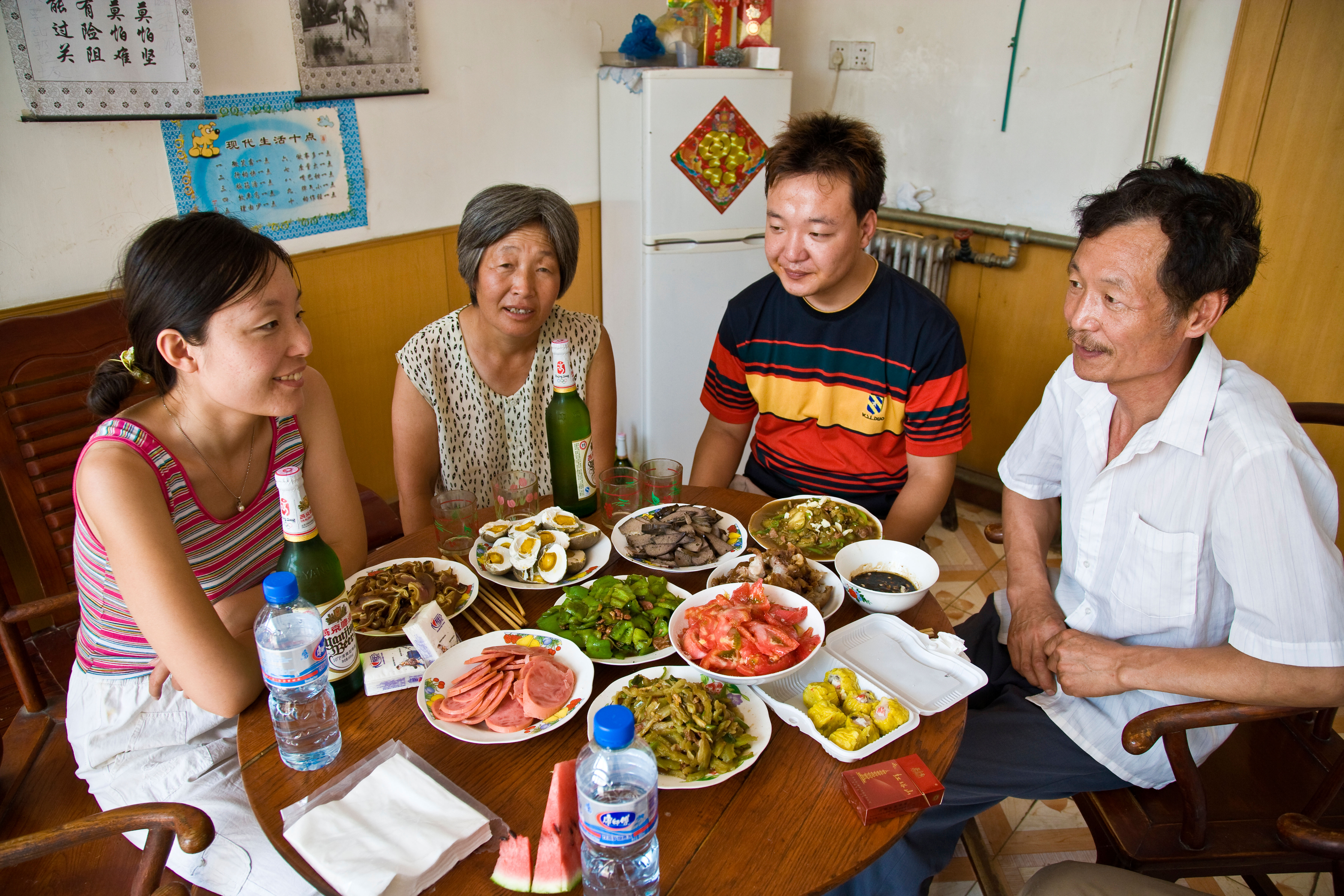
Relationships within Chinese families have become less formal, and parents no longer expect their children to show unquestioning obedience. In the past, parents arranged marriages and chose whom the children would marry. Many young people today choose their own marriage partners, although usually with the consent of their parents. Parents still help arrange some marriages in rural areas.
Chinese families traditionally valued sons far more than daughters. A husband could divorce his wife if she failed to give birth to sons. In some cases, poor families killed daughters at birth to save resources for the sons. Today, social policy stresses that families should value girls and boys equally. The Communist government established a law in 1950 that recognized men and women as equal. It supports the idea that women should contribute to the family income and participate in social and political activities. Women do many kinds of work outside the home. Many husbands share in the shopping, housecleaning, cooking, and caring for the children. However, equality between the sexes is more widely accepted in the cities than in the countryside.
Rural life.
Traditionally, most Chinese people lived in small villages. Many families owned their land, though it was often not large enough to support them. Many other families owned no land but worked as tenants or laborers for landowners and rich farmers.
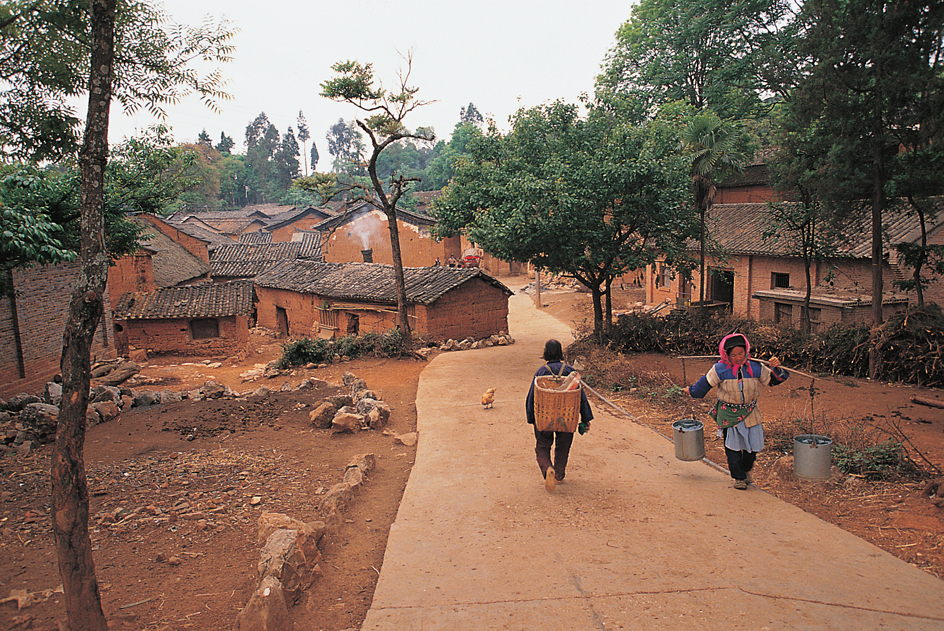
After the Communists took control of China, they organized a collective ownership system, in which large groups of peasants owned land, tools, work animals, and workshops in common. The highest level of the collective system was the commune, which administered the economic activity for groups of about 5,000 families. Smaller units called production brigades were further divided into production teams, which were the equivalent of a small village. These units planned and performed most day-to-day farm work. In some cases, each family owned its house and a plot on which it could grow vegetables and raise chickens or hogs for its own use. If a family grew a surplus of crops, it could sell the surplus in a local market.
In 1979, the government began a new system to gradually abolish communes, brigades, and teams. Now, cooperative groups known as collectives make contracts with individual families. The contract tells how much land a family can work, what crops and livestock the family will raise, and how much it will sell to the government at a set price. After fulfilling its contract, the farm family may use the remainder of its production as it wishes. Most families use some for food and sell the rest on the open market.
Some rural families sign contracts as specialized households. These households may specialize in raising only one commodity, such as chickens or silkworms. Or they may provide farm machinery, repairs, or handicrafts on the free market instead of doing full-time farm work. After paying an agreed amount to the government, the specialized household keeps any profit. Some households operate businesses or small factories and hire employees. Some of them have become relatively wealthy.
The standard of living in rural China is much higher now than it was before the Communists came to power. The average income in rural areas is still low, but most rural families have enough food and clothing and also own a bicycle or motor scooter, and a radio or television. Some own such appliances as a refrigerator or a washing machine. Most rural families live in five- or six-room houses. Older houses are made of wood or mud bricks and have a tile or thatched roof. Newer houses are made of clay bricks or stone and have a tile roof. Some villages have apartment buildings. Except in remote areas, most houses and apartments have electric power.
Rural people work many hours a day, especially during planting and harvesting time. Even so, they have time for recreation. Many villages have a small library and a recreation center with a television and sometimes a computer. Villages may also have sports facilities, music groups, or theater groups. Today, many rural adults, especially young adults, migrate to cities, where they work equally long hours in factories or at other jobs.
City life.
China’s cities are crowded, and housing is in great demand. Many city residents live in older neighborhoods where the houses resemble those in the countryside. Many other city dwellers live in large new apartment complexes. City governments construct some apartment buildings, and large businesses build others to house their workers. Most families pay rent for their apartments, but some have the opportunity to buy them.
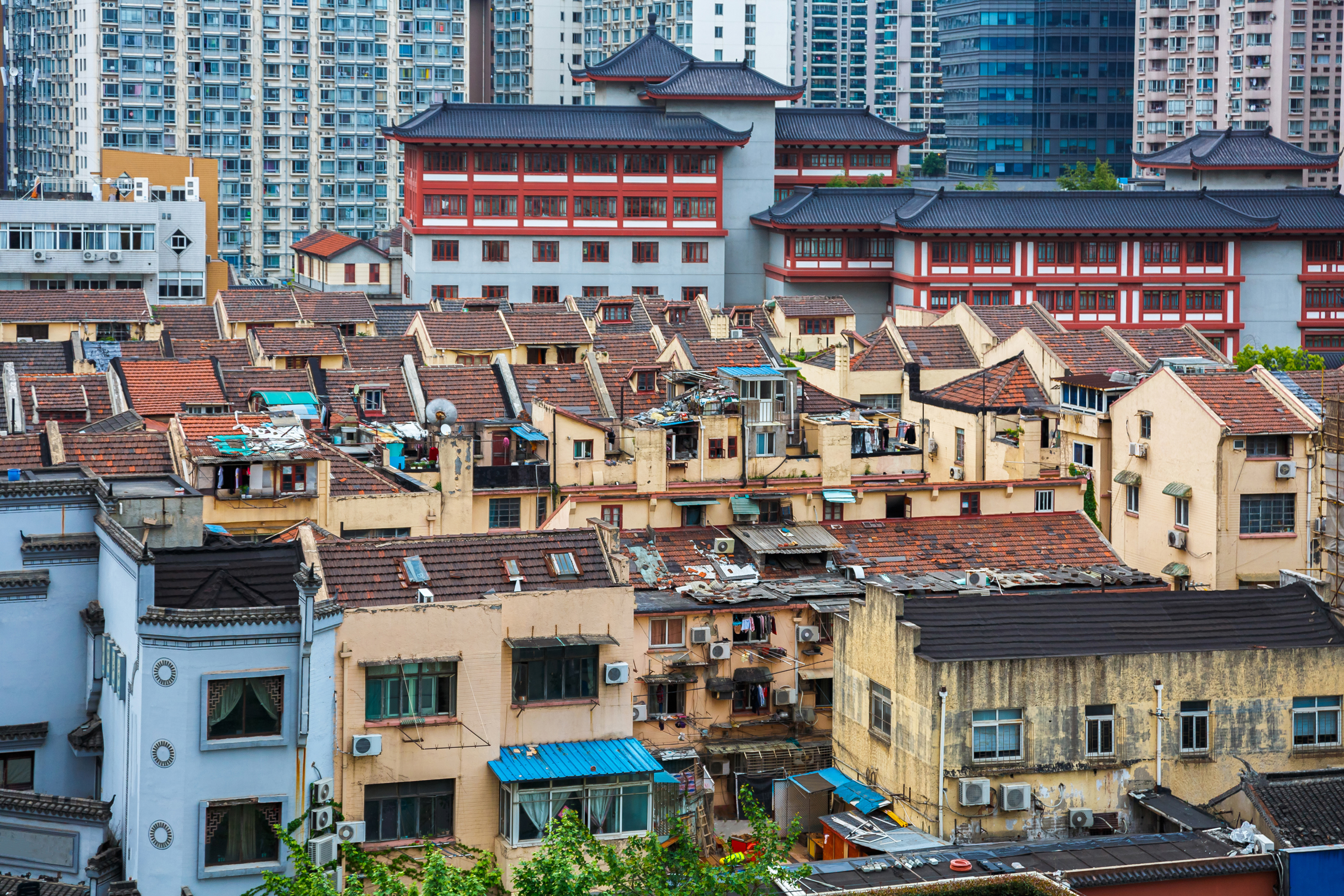
Most city neighborhoods or apartment complexes have an elected residents’ committee, also called a neighborhood committee. The committee supervises various neighborhood facilities and programs, such as day-care centers, evening classes, and after-school activities for children. When fights, petty crimes, or acts of juvenile delinquency occur in the neighborhoods, committee members talk with the people involved and try to help them solve the problem. These neighborhood organizations seek to keep crime from becoming a serious problem despite the overcrowding in China’s cities.
In general, people in China’s cities have a higher standard of living than people in the countryside. Wages are low compared with those of workers in Western industrial countries. However, most households have at least two wage earners, and rents and the cost of food are low. Most city people can afford a bicycle or motor scooter, a television set, and some household appliances. Some are able to buy a computer or a car. City people have more cultural advantages than rural people have. They can attend a greater variety of classes and meetings to further their education. Cities typically have more theaters, museums, and other cultural activities.
Food.
Grains are the main foods in China. Rice is the favorite grain among people in the south. In the north, people prefer wheat, which they make into dumplings and noodles. Corn, millet, and sorghum are also eaten. Vegetables, especially cabbages and tofu (soybean curd), rank second in the Chinese diet. Pork and poultry are favorite meats. People in China also like eggs, fish, fruits, and shellfish. Fast food, such as hamburgers and french fries, has become popular in China’s cities.
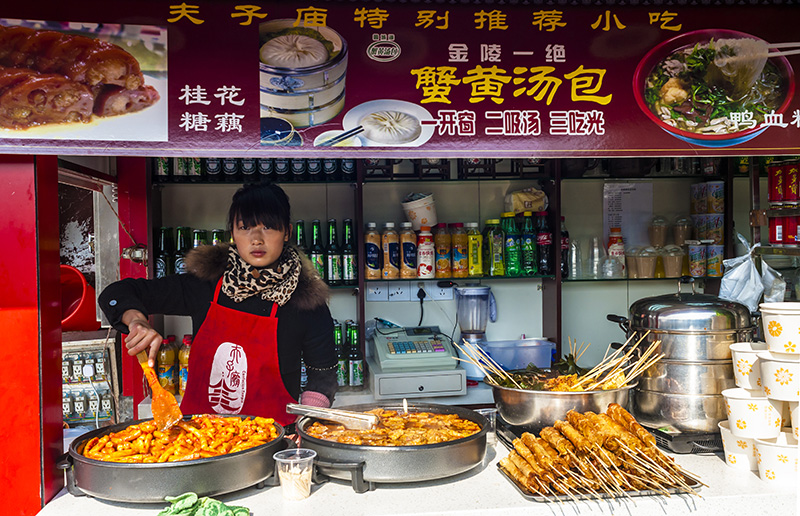
Breakfast foods in China include rice porridge, steamed buns, and deep-fried pastries that taste like doughnuts. Favorite lunchtime foods include rice with vegetables or meat, noodles, and dumplings. A typical main meal includes vegetables with bits of meat or seafood, soup, and rice or noodles. Chopsticks and soup spoons serve as the utensils at Chinese meals.
Tea is the traditional favorite Chinese beverage. Soft drinks and beer have also become popular. Ice cream is a favorite treat in China’s cities.
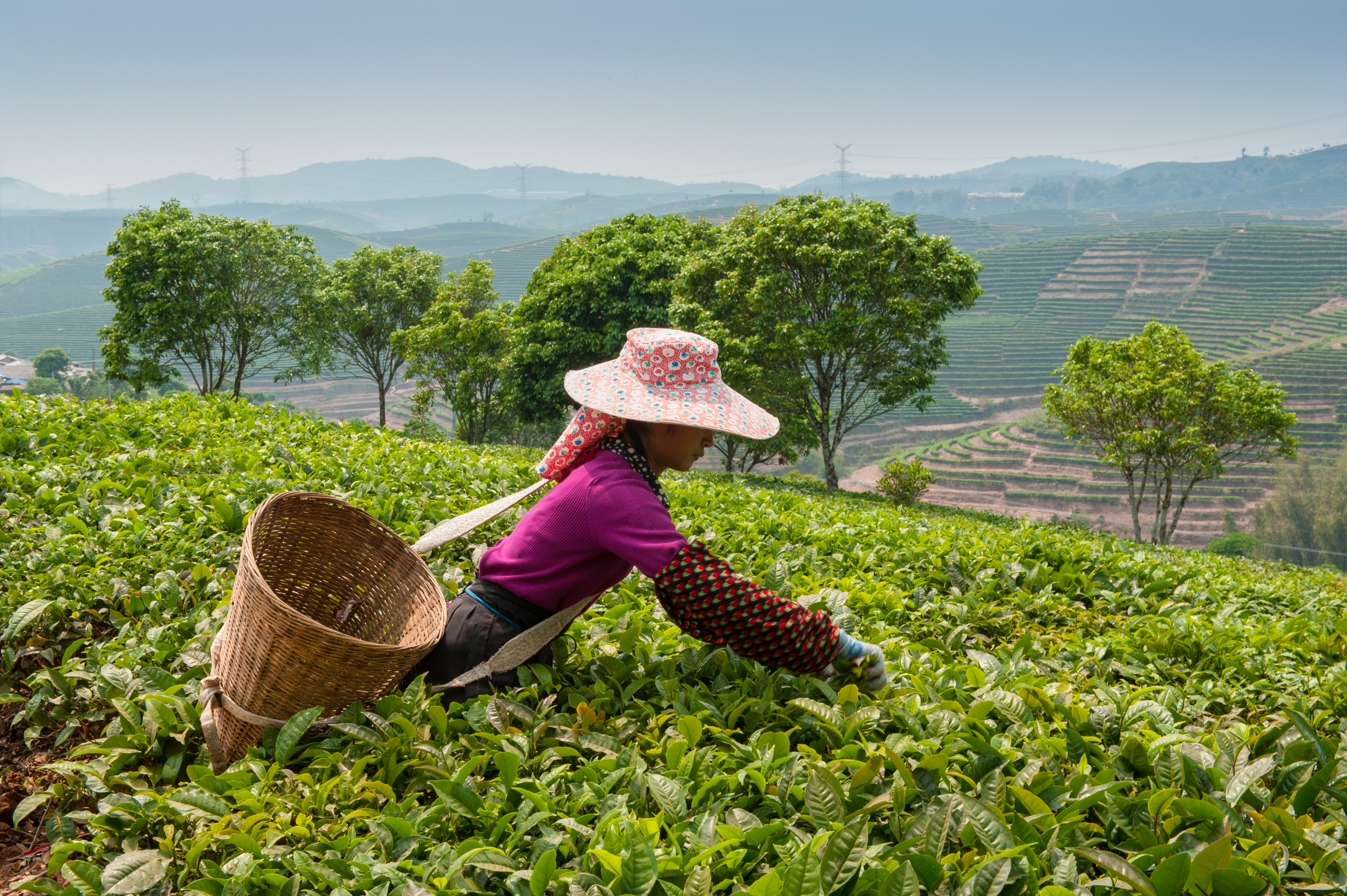
Fancy Chinese cooking varies from region to region. Beijing (also spelled Peking) duck is a northern specialty. It consists of slices of crisp roast duck eaten with thin rolled pancakes and a sweet sauce made from soybean paste. Foods from the coastal areas include fish, crab, and shrimp. The spiciest foods come from Sichuan and Hunan. Chinese cooks vary the texture of dishes by adding crunchy bamboo shoots and water chestnuts (thickened stems of an aquatic plant). The Chinese occasionally eat things rarely used as food elsewhere, such as tiger lily buds, sea animals called sea cucumbers, and snake meat. Shark’s fin soup has long been considered an expensive delicacy. However, it has become less popular in China, as the shark population is threatened with extinction.
Recreation.
The Chinese enjoy many recreational activities that are popular throughout the world. Watching television, listening to music, reading, going to the movies or opera, and shopping are common. Karaoke clubs, where guests sing along to recorded music, have become popular. Badminton, basketball, soccer, and table tennis are favorite sports. People often invite guests over for meals, but going to restaurants is also popular. Many urban youth use computers at internet cafes.
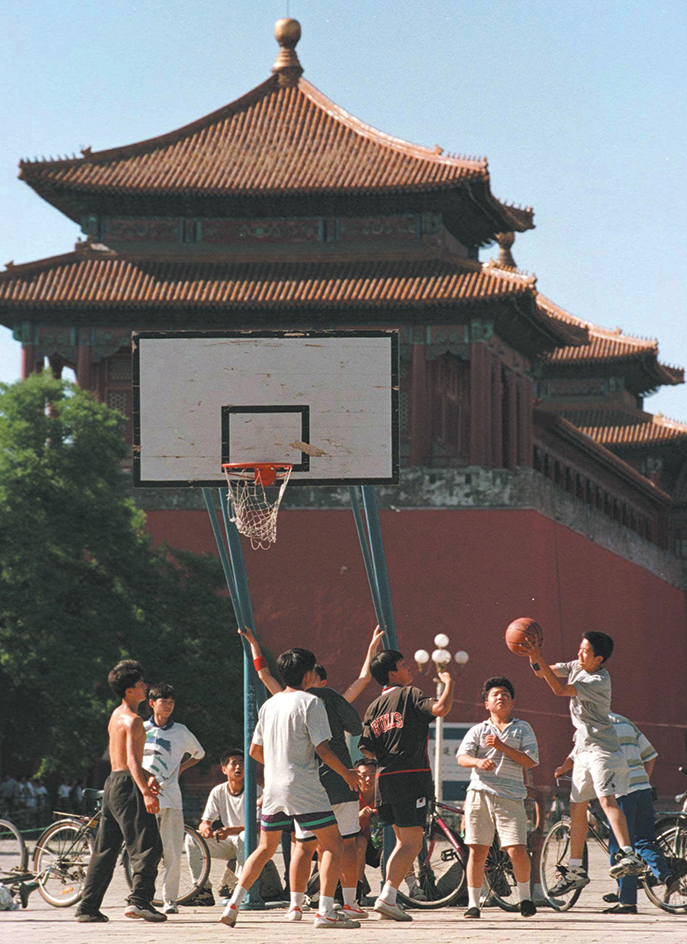
Traditional Chinese martial arts, such as t’ai chi ch’uan (also written taijiquan), are popular. Ballroom dancing parties take place both indoors and outdoors. In parks, the Chinese play xiang qi (a Chinese version of chess) and Chinese card games. Another favorite game is mah-jongg, which is played with engraved tiles.
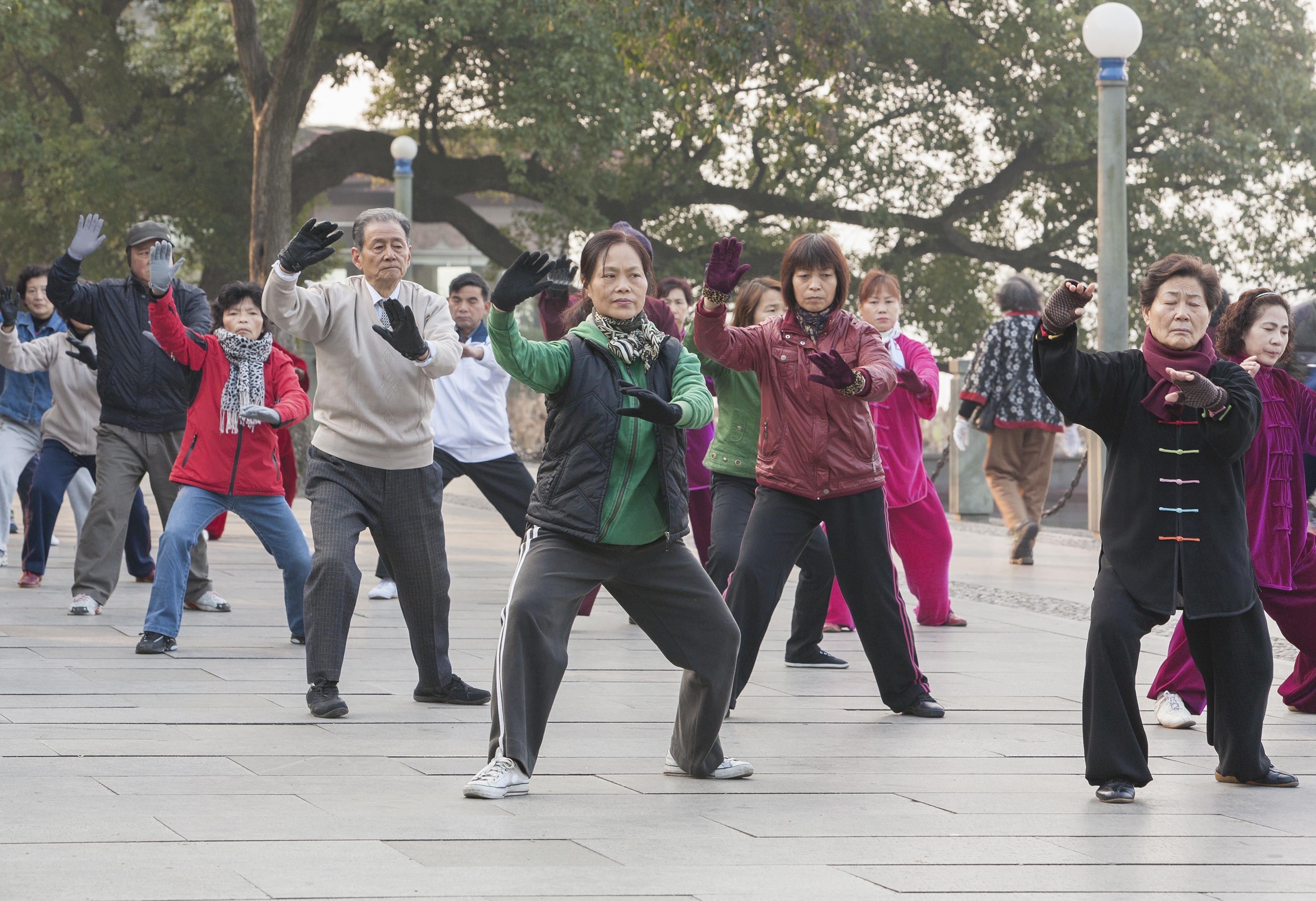
Clothing.
Most Chinese people wear clothing similar to that of Europeans and North Americans. In urban areas, fashionable designs are popular, especially among younger people. Members of certain religious and ethnic groups may wear special costumes and headgear.
Health care
in China combines traditional Chinese medicine and modern Western medicine. Traditional medicine is based on the use of herbs, attention to diet, and ancient treatments, such as acupuncture. In acupuncture, thin needles are inserted into the body at certain points to relieve pain or treat disease. From Western medicine, the Chinese have adopted many drugs and surgical methods.
Hospitals and clinics in China may be either publicly or privately owned. Hospitals in large cities provide access to advanced medical technologies. In rural areas, some villages have medical workers or rural doctors, although some of them do not have much medical training. Village health care providers can treat simple cases and prescribe drugs. For more advanced care, rural Chinese may have to travel a great distance to reach a township health center or a county hospital.
Beginning in the late 1970’s, China’s government greatly reduced health care funding. Now, patients are expected to pay more of their health care expenses. Most urban residents live near good facilities and can afford to pay for care, but they often have long waits to see doctors in China’s crowded hospitals. Many rural people no longer have access to affordable health care.
Religion
is tolerated, but restricted, by the Communist government of China. However, it played an important part in traditional Chinese life. Confucianism, Taoism (also spelled Daoism), and Buddhism were major religions throughout most of China’s history. The religious beliefs of many Chinese people included elements of all three.
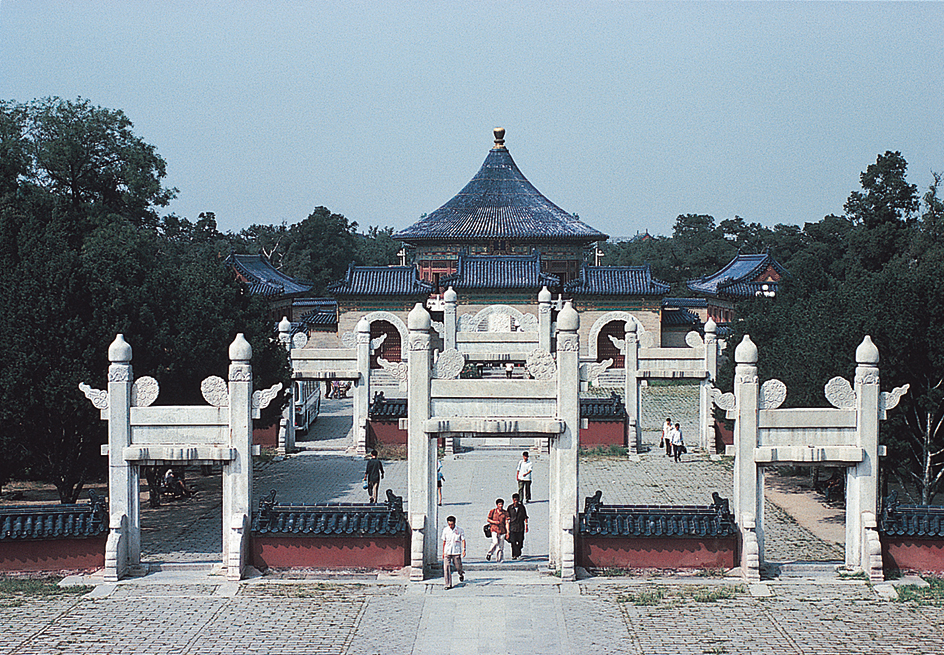
Confucianism is based on the ideas of Confucius, a Chinese philosopher born about 550 B.C. Confucian belief stresses the importance of ethical standards and of a well-ordered society. In the ideal Confucian society, parents have the right to rule their children, men to rule women, and the educated to rule the common people. Confucianism strongly emphasizes deep respect for one’s ancestors and for the past.
Taoism, also native to China, teaches that a person should live in harmony with nature. Taoism began during the 300’s B.C. and is based largely on the book Tao Te Ching (The Classic of the Way and the Virtue). It came to include many elements of Chinese folk religion and so became a religion with many protective gods.
Buddhism reached China from India before A.D. 100 and became well established throughout the country during the 300’s. Under the influence of Taoism, Chinese varieties of Buddhism developed. They taught strict moral standards and the ideas of rebirth and life after death. The Chinese Buddhists worshiped many gods and appealed to them for help.

China’s Communist government regarded religion as a part of China’s past that would die out. It expected scientific and Marxist thought to replace religion and for many years persecuted religious believers. The Communists destroyed some Taoist and Buddhist temples and other religious buildings, and they turned others into museums, schools, and meeting halls. Beginning in the 1970’s, the government adopted a more tolerant attitude toward religion. It now allows open practice of religion and the publication of religious works. It restored and reopened some religious buildings. Nonetheless, the government still tries to control religious organizations.
Christian missionaries worked in China for many years before the Communists came to power. The Communists expelled foreign missionaries and closed most Christian churches. In the late 1900’s, the government permitted many Christian churches to reopen, but it suppressed Christian movements that organized outside of government control.
Muslims make up a small percentage of the Chinese population. They live mainly in northwestern China. The Hui (ethnic Chinese Muslims) and the Uyghurs are the largest of several traditionally Muslim groups in the country.
A spiritual movement called Falun Gong appeared in China in the early 1990’s and grew rapidly. Falun Gong teaches techniques of meditation through exercises as a means of improving physical health and spiritual purity. In 1999, members of Falun Gong staged a 10,000-person demonstration outside central government buildings in Beijing. This demonstration led the Chinese government to suppress Falun Gong and to issue an arrest warrant for its founder. The group nevertheless continues to claim many followers in China.
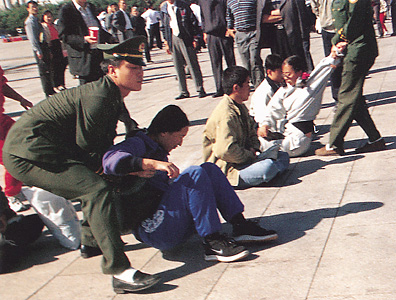
Education.
The Chinese have always prized education and respected scholars. The Confucians believed that people could perfect themselves through study. They made no sharp distinction between academic education and moral education. For many years, candidates for government jobs had to pass an examination based on classical Confucian works.
The Communists regard education as a key to reaching their goals. They have conducted literacy programs in rural areas in an effort to teach all China’s people to read and write. In the 1950’s, they began a language reform program to help reduce illiteracy. The program included simplifying more than 2,000 of the most basic Chinese characters by reducing the number of strokes in each character. Such changes helped make Chinese easier to write. Today, almost all Chinese people 15 years of age or older can read and write.
Moral education is important in China. However, the Chinese teach morality as defined in a Communist sense. They say students should be both politically committed to Communist ideas and technically skilled. Courses in China combine the teaching of academic facts and political values.
In the mid-1980’s, China’s government began trying to get children to attend school for at least nine years. Students who show outstanding ability on nationwide examinations go to key schools, which have the best faculties and facilities. Key schools offer education at the elementary, secondary, and college levels. Some private schools exist, although their fees are high.
Elementary and secondary schools.
Children in China enter elementary school at the age of 6 or 7. Nearly all of the country’s children attend elementary school, which lasts for 5 or 6 years. Elementary school courses include art, Chinese, English, geography, history, mathematics, music, science, physical education, and political education.
After elementary school, students may enter secondary schools called middle schools. Junior middle school lasts three years. Senior middle school continues for another two or three years. Middle school courses include many subjects studied in elementary school, plus biology, chemistry, physics, and foreign languages. Technical and vocational middle schools offer training in agriculture, industrial technology, and other work-related subjects. Almost all elementary school graduates enter middle school, but far fewer continue on to the senior level.
Higher education.
Nationwide examinations determine who may advance to higher education and at what kind of school. Students study intensely for the tests. Those who do best on the tests enter a university. Some wealthier students who do not qualify may pay to attend private universities. The chief university subjects include economics, education, engineering, literature, medicine, and science.
Others who pass the tests with lower scores may enter a technical college or vocational university. These schools train students for jobs in business and industry. Many students complete two- or three-year programs in such fields as agriculture, industrial arts, and nursing.
China has about 2,500 institutions of higher learning, including both universities and schools for adult education. The number of students who desire a university education exceeds the number of openings available, and many attend colleges overseas. In addition to technical and vocational schools, adult students can continue their education at “workers’ colleges” run by factories. These schools offer short-term courses for employees. Other adult education includes part-time study; radio, television, and correspondence courses; and distance learning programs conducted over the internet.
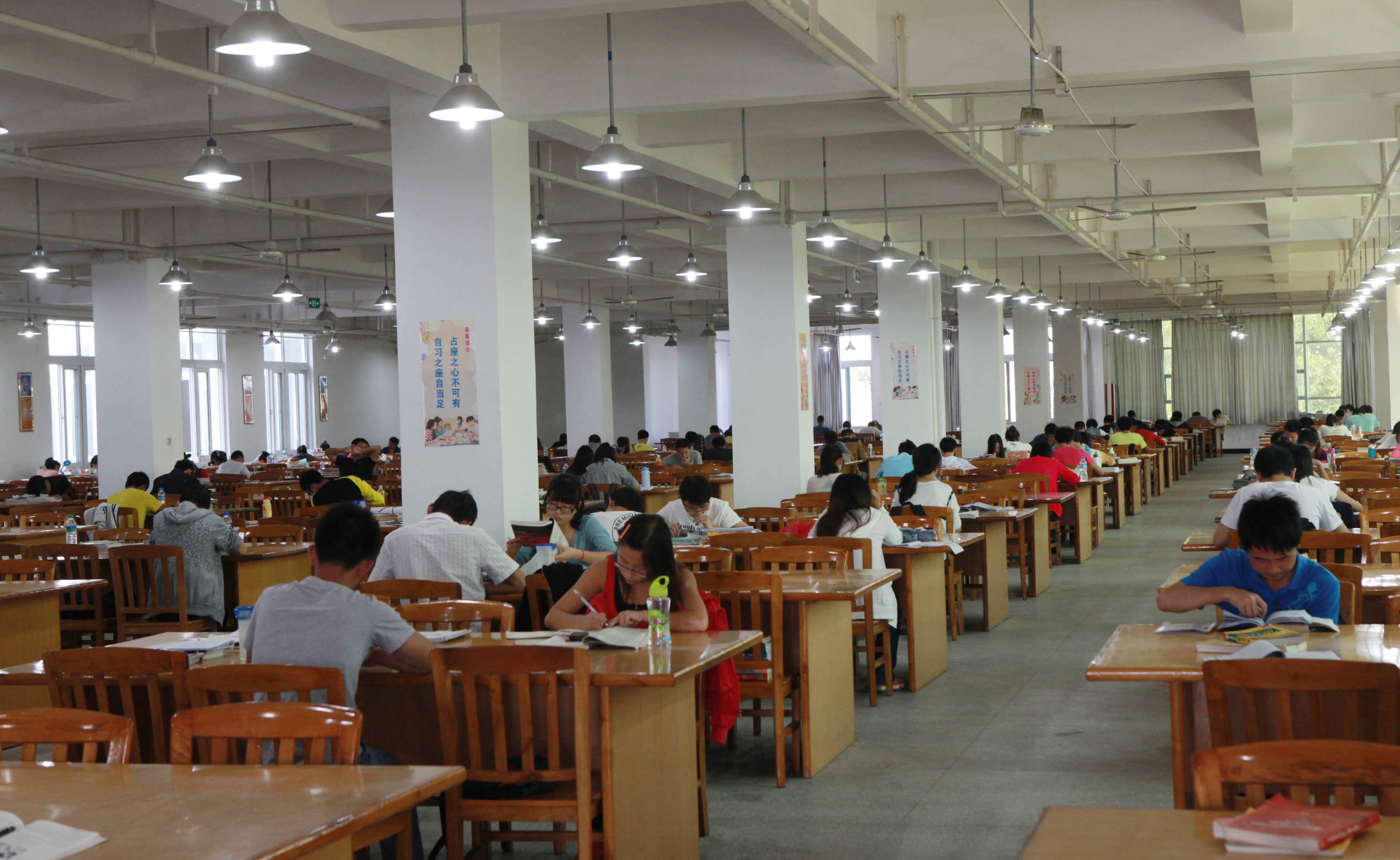
The arts
The Chinese have one of the longest and greatest artistic traditions in the world. Chinese pottery and jade from the 4000’s B.C. showed a great deal of technical skill and artistic refinement. During the Shang (1766-1045 B.C.) and Zhou (1045-256 B.C.) dynasties, Chinese metalworkers excelled in bronzework. Late in the Zhou dynasty, the Chinese produced remarkable textiles and lacquered items. Most early Chinese art reflected the power and mystery of nature. But around 200 B.C., Chinese art and literature began to focus on mythical and historical figures, and human situations and values. See Bronze; Furniture (In China); Ivory.
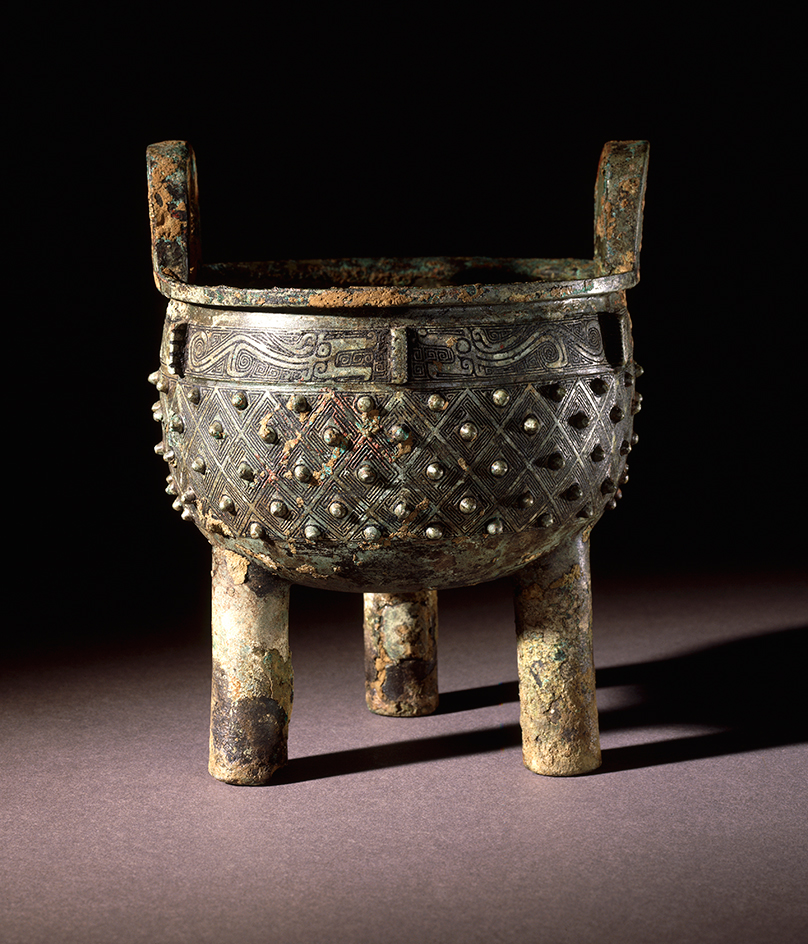
By the Song dynasty (A.D. 960-1279), nature was again a prominent theme in Chinese art and literature. Artists emphasized the balance between two principal forces of nature, called yin and yang. Landscape painters, for example, aimed for harmony, rhythm, and balance in their compositions. Chinese writers, musicians, and architects also tried to capture these qualities in their work.
In the late 1800’s and early 1900’s, European and American culture began to influence Chinese life, including the arts. After the Chinese Communists gained control of the country in 1949, they required art and literature to express Communist values and ideals. Since the late 1970’s, the government has relaxed its demands, allowing the revival of Chinese traditions in the arts and permitting experimentation in non-Chinese styles.
Literature.
The earliest Chinese literature was inscribed on pieces of bone or turtle shell called oracle bones from about 1500 to 1045 B.C., during the Shang dynasty. These inscriptions recorded the administrative duties, dreams, and future concerns of the royal families. A period of great philosophical activity in the latter part of the Zhou dynasty produced the Confucian, Taoist, and other classic writings. These classics, written in a highly refined script known as wenyan (patterned words), became models of Chinese literature.
For most of Chinese history, poetry was considered the highest form of literary achievement. It was esteemed not only on its own, but also as an important part of dramas, stories, and novels. Poetry was even inscribed on paintings. For more information on China’s rich literary heritage, see Chinese literature.
Painting.
Chinese potters painted sophisticated designs on their vessels as early as the 4000’s B.C. Painting on silk began during the Shang dynasty. Painting on paper began after the Chinese invented paper in the 200’s B.C. Early paintings showed people, animals, spirits, or abstract designs. By the A.D. 900’s, landscapes became the chief subject of Chinese painting. During the Song dynasty (960-1279), many artists painted landscapes showing towering mountains and vast expanses of water. These artworks expressed a harmony between nature and the human spirit.
Chinese calligraphy (fine handwriting) has long been closely linked with the arts of poetry and painting. The use of a brush for writing became common during the Han dynasty (206 B.C.-A.D. 220). The Chinese traditionally considered calligraphy as the highest form of art.
In the A.D. 1000’s, painters began to combine landscapes and other subjects with written inscriptions that added to the overall design. These inscriptions typically described the artist’s feelings about the scene or the circumstances under which the painting was created. Owners of such paintings would often add inscriptions to the work, recording their own reactions.
In traditional Chinese painting, artists use the same kind of brush for painting as for calligraphy. It consists of a wooden or bamboo handle with bristles of animal hair arranged to form an extremely fine point. The artist can paint many kinds of lines by adjusting the angle of the brush and the pressure on it. Chinese artists paint chiefly with black ink made of pine soot and glue. They sometimes use plant or mineral pigments to add color to their paintings. Chinese painters have created many works on paper or silk scrolls, which can be rolled up for storage and safekeeping. Other paintings have been done on plaster walls or on flat pieces of silk or paper. See Painting (Chinese painting).
Bronze and jade.
The earliest Chinese bronzes were highly decorated vessels created for use in rituals during the Shang and Zhou dynasties. Bronze workers cast the vessels in piece molds, clay molds made of separate pieces of baked clay, which had to be destroyed to free the vessels. Art collectors have prized early Chinese bronzes for centuries, valuing them both for their exquisite design and their antiquity.
The Chinese have always held jade in high regard. Their language has many words built on yu, the word for jade. These words often convey notions of beauty, virtue, long life, and purity. The Chinese used various forms of jade in ceremonies, buried it with the dead, displayed it in homes and palaces, and wore it for both decoration and protection. Jade amulets (charms) supposedly provided protection from evil spirits and preserved the owner’s “life force.” The Chinese esteemed jade chimes for their clear and uplifting sound.
Sculpture and pottery.
Most Chinese sculptures are associated with ritual and religion. They often stand as tomb guardians above ground or as burial attendants in or near graves. Since 1974, thousands of earthenware figures of people, horses, and chariots have been discovered near Xi’an in burial pits near the tomb of Shi Huangdi, the first emperor of the Qin dynasty. These figures, the earliest known life-sized Chinese sculptures, date from the late 200’s B.C.
Buddhism reached China from India toward the end of the Han period (206 B.C. to A.D. 220), and sculptors began to turn their skills to the service of this new religion. The Buddhists built temples in or near cities. In rural areas, they hollowed out cliffsides to form chapels. Sculptors decorated the chapels with figures of Buddha and his attendants. Some sculptures were carved from local stone. Others were molded of clay, fired, painted, and glazed. Still other sculptures were cast of bronze and coated with gold. See Sculpture (China).
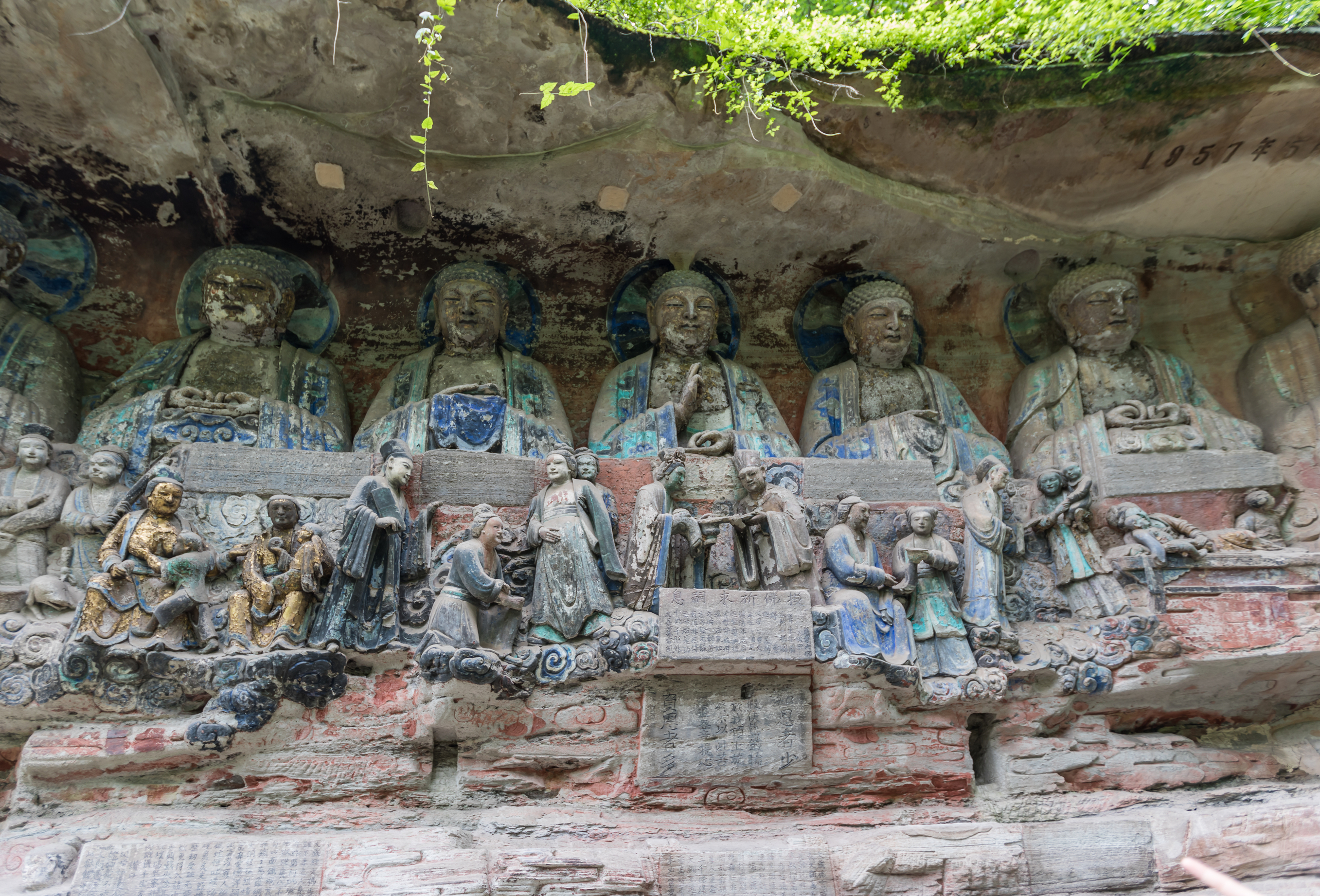
The Chinese have made pottery since prehistoric times. They began to use the potter’s wheel before 3000 B.C. and produced glazed pottery as early as the 1300’s B.C. The Chinese developed the world’s first porcelain in the A.D. 100’s, during the Han dynasty. They admired porcelain, and wrote many essays and poems about it. Among the most esteemed types of porcelain were “official ware” (guanyao), produced for the emperor’s household; bluish-white qingbai ware; and crackled ge ware.
Other kinds of porcelains were decorated with folk symbols and the bright colors of folk and religious art. Some featured beautifully painted flowers, landscapes, historical scenes, and calligraphic inscriptions. Porcelain dishware and vases produced during the Tang (618-907), Song (960-1279), and Ming dynasties (1368-1644) and the early part of the Qing dynasty (1644-1912) are among the greatest treasures of Chinese art.

Architecture.
Traditionally, most of the public buildings in China were constructed of wood on a stone or earthen platform. The most outstanding feature of Chinese architecture was a large tile roof with extending edges that curved gracefully upward, a development dating from the Tang dynasty. Wooden columns were connected to the ceiling beams by wooden brackets that branched out to support these roofs. Walls did not carry weight but merely provided privacy. Most buildings had only one story, but the Chinese also built many-storied towers called pagodas (see Pagoda). Today, Chinese architects seldom construct buildings in the traditional styles, and new buildings in Chinese cities look much like those in any modern city.
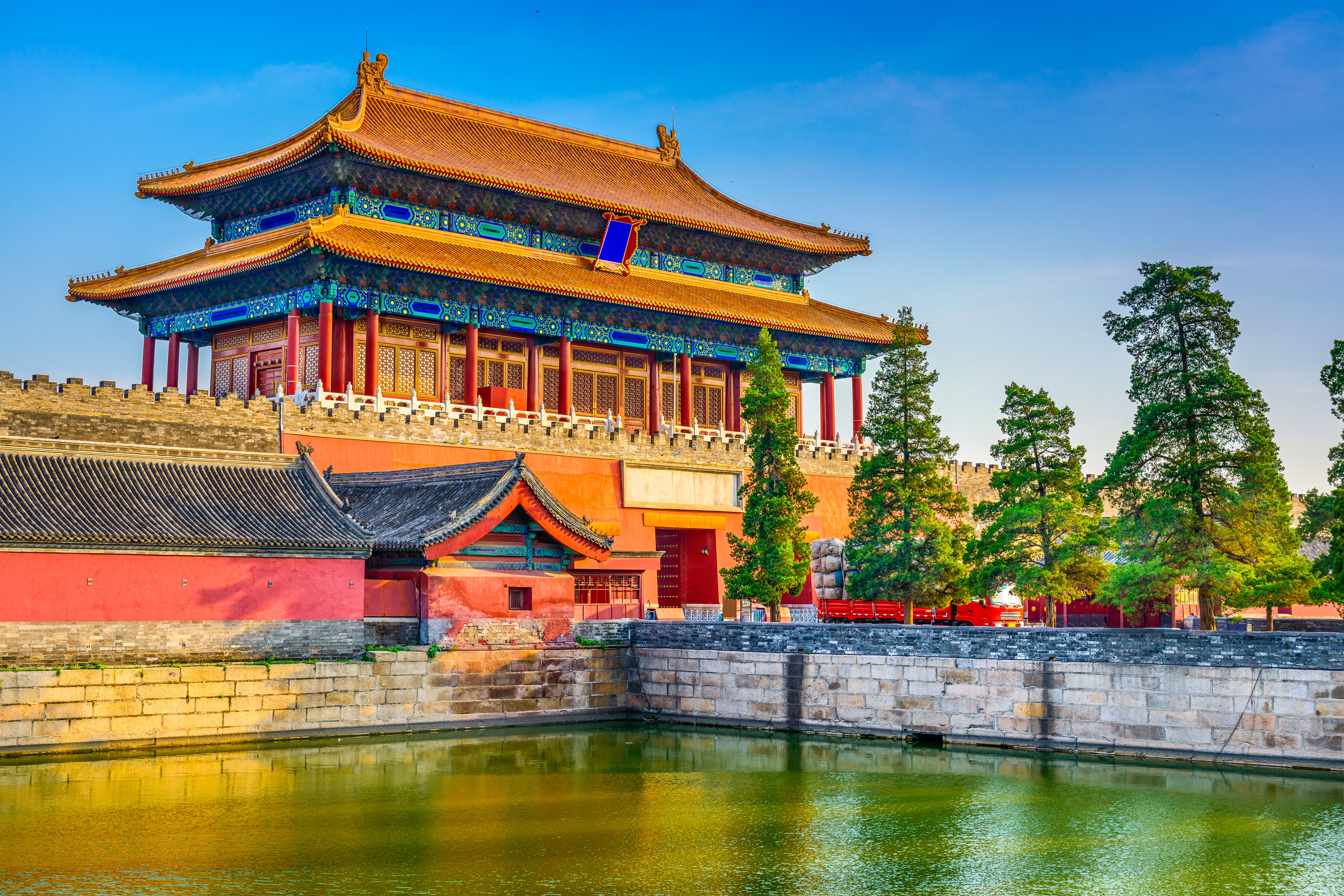
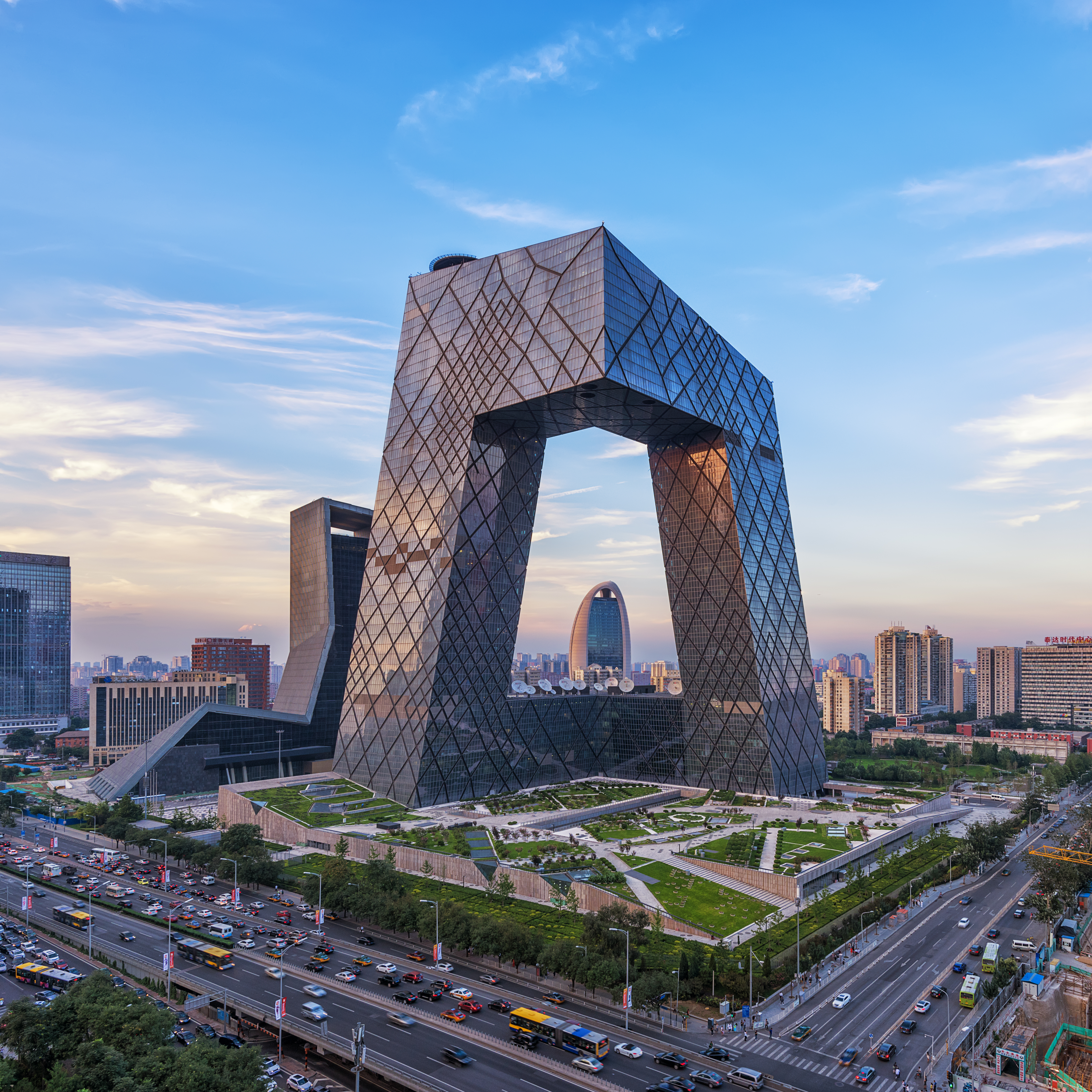
China’s traditional landscape gardens were designed primarily to serve as Taoist retreats. They combine artistic design, complex symbolism, and careful arrangement. Their structure reflects the interplay between the principles of yin and yang. For example, garden designers place angular buildings among rounded natural features and rock formations next to water. Light areas alternate with dark, and empty spaces with solids.
Music
was extremely important in traditional Chinese society, both for ritual and recreational purposes. The Record of Rites, an ancient Confucian text, states that music is the best way to achieve harmony in the universe. The occasions for music in China ranged from grand public ceremonies and festivals to marriages, funerals, and simple social gatherings.
Loading the player...Chinese ancient ceremonial music
Traditional Chinese music sounds much different from the music of Europe and America because it uses a different scale. The scales most commonly used in Western music have eight tones, but most Chinese scales have five tones. Melody is the most important element in Chinese music. Instruments and voices follow the same melodic line instead of following different lines that harmonize.
Traditional Chinese instruments include the qin, a seven-stringed instrument, and the sheng, a mouth organ made of 17 bamboo pipes. The Chinese also have a lutelike instrument called the pipa and two kinds of flutes, the xiao and the di. Today, Chinese musicians also play non-Chinese instruments and perform the music of many American and European composers, jazz artists, and rock stars.
Theater.
There are several types of Chinese drama: classic zaju (variety performance) of the Yuan dynasty (1279-1368); southern drama (xiwen and chuanqi); various regional styles, such as Kunqu, a form of opera from the region of Suzhou; and a Qing dynasty hybrid form known as jingxi, or Beijing opera. Although each of these traditional dramatic forms has its own special features, all combine spoken language, music, acting, and sometimes mime, dance, or acrobatics.

Chinese drama often uses poetry to convey dramatic mood. Characters that appear frequently in traditional Chinese drama include scholars, military men (both good and bad), heroic women, and silly comic characters. Since the late 1800’s, forms of drama from Europe and the United States have influenced Chinese plays.
The land
China is the world’s third largest country in area. Only Russia and Canada are larger. China’s land is as varied as it is vast. It ranges from subarctic regions in the north to tropical lowlands in the south, and from fertile plains in the east to deserts in the west.
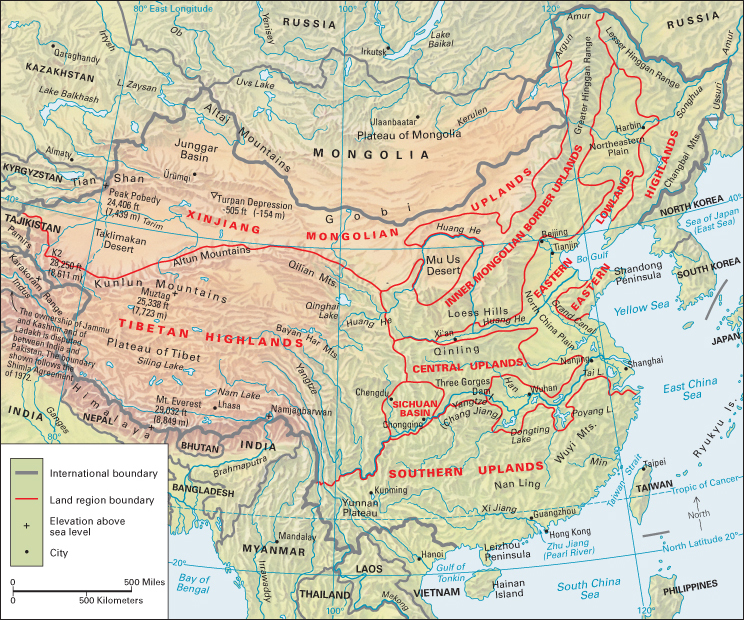
Northeastern China was once called Manchuria, but today it is called the Northeast (Dongbei in Chinese). Xinjiang covers the far northwest, and Tibet (or Xizang) covers the far southwest. Inner Mongolia lies in the north. The eastern half of China, south of the Northeast and Inner Mongolia, is sometimes called China proper. It has always had most of China’s people.
China can be divided into eight major land regions. They are (1) Tibetan Highlands, (2) Xinjiang-Mongolian Uplands, (3) Inner Mongolian Border Uplands, (4) Eastern Highlands, (5) Eastern Lowlands, (6) Central Uplands, (7) Sichuan Basin, and (8) Southern Uplands.
Much of China is so densely populated that little wildlife remains. However, rugged mountain forests at the eastern edge of the Tibetan Highlands shelter pandas, golden monkeys, takins, and other rare animals. A few elephants and gibbons inhabit the tropical Southern Uplands region. A few Amur, or Siberian, tigers live in remote forests of the Northeast.
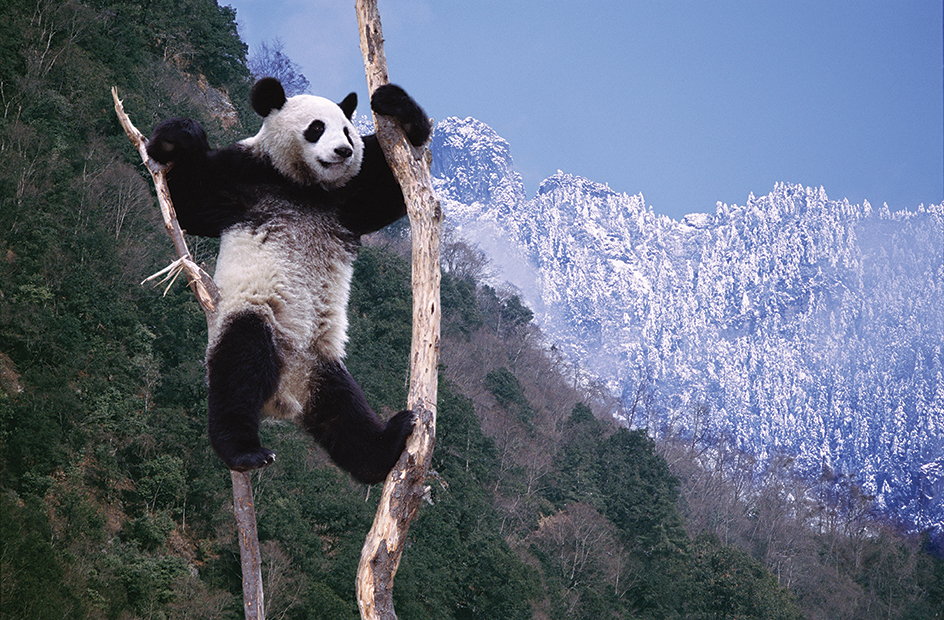
The Tibetan Highlands
lie in southwestern China. The region consists of a vast plateau bordered by towering mountains—the Himalaya on the south, the Karakoram Range on the west, and the Kunlun on the north. The world’s highest mountain, Mount Everest, rises 29,032 feet (8,849 meters) above sea level in the Himalaya in southern Tibet. Two of the world’s longest rivers, the Huang He and the Yangtze, begin in the highlands and flow eastward across China to the sea. The Yangtze River is called the Chang Jiang in China.
Tibet suffers from both drought and extreme cold. Most of the region is a wasteland of rock, gravel, snow, and ice. A few areas provide limited grazing for hardy yaks—woolly oxen that furnish food, clothing, and transportation for the Tibetans. Crops grow only in a few lower-lying areas, largely in the east.
The Xinjiang-Mongolian Uplands
occupy the vast dry stretches of northwestern China. The region has plentiful mineral resources. However, it is thinly populated because of its remoteness and harsh climate.
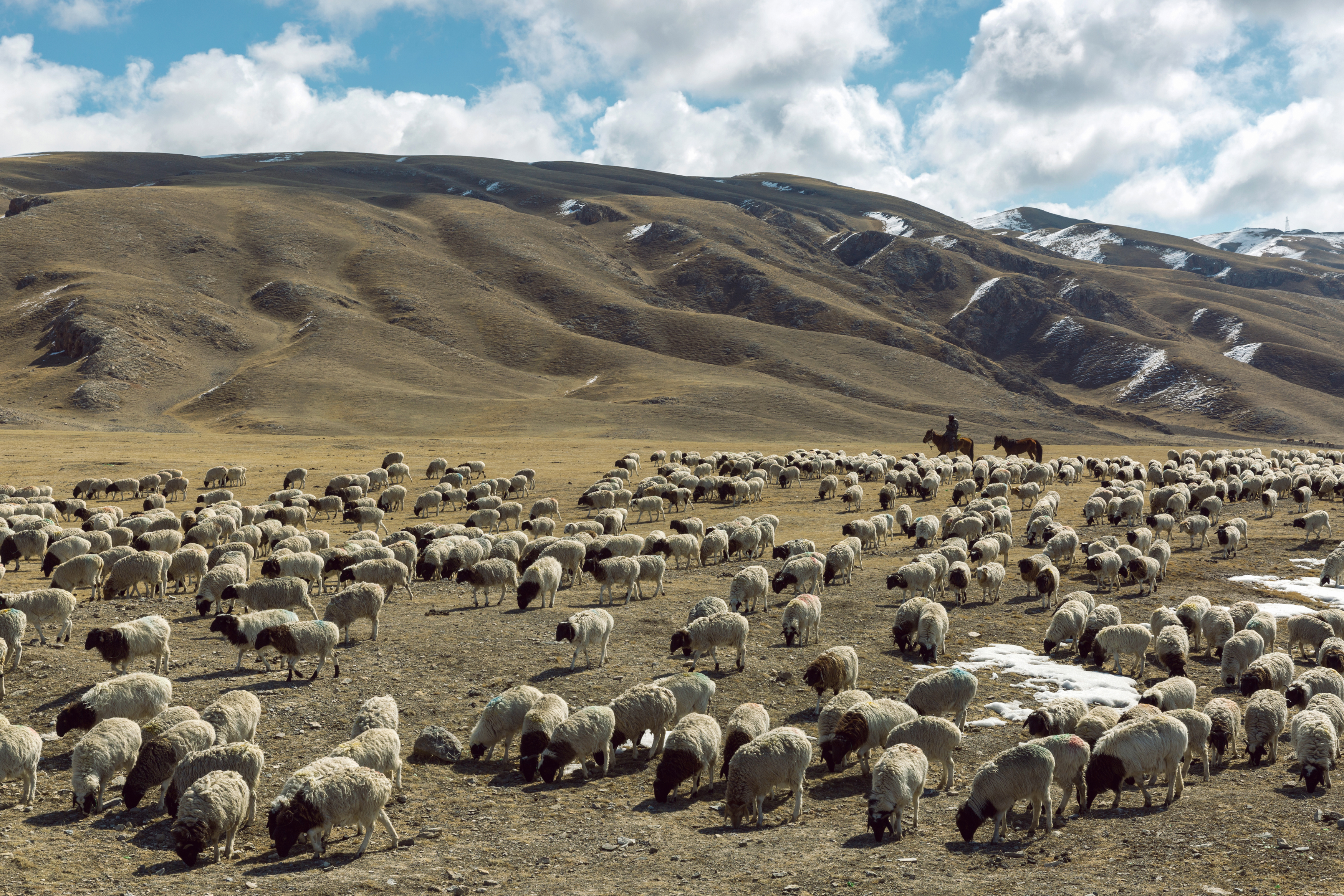
The eastern part of the region consists of two deserts, the Mu Us and part of the Gobi. The western part of the region is divided into two areas by the Tian Shan range, which has peaks over 20,000 feet (6,096 meters) above sea level. South of the mountains lies one of the world’s driest deserts, the Taklimakan. The Turpan Depression, an oasis near the northern edge of the Taklimakan, is the lowest point in China. It lies 505 feet (154 meters) below sea level. To the north of the Tian Shan, the Junggar Basin stretches northward to the Altai Mountains along the Mongolian border.
The Inner Mongolian Border Uplands
lie between the Gobi and the Eastern Lowlands. The Greater Hinggan (also spelled Khingan) Range forms the northern part of the region. The terrain is rugged, and little agriculture is practiced. The southern area is a plateau thickly covered with loess, a fertile, yellowish soil deposited by the wind. Loess consists of tiny mineral particles and is easily worn away. The Huang He and its tributaries have carved out hills and steep-sided valleys in the soft soil. The name Huang He means Yellow River. It comes from the large amounts of silt carried by the river.
The Eastern Highlands
consist of the Shandong Peninsula and the eastern part of the Northeast. The Shandong Peninsula is a hilly region with excellent harbors and rich deposits of coal. The hills of the eastern part of the Northeast have some of China’s best forests. The highest hills are the Changbai Mountains (Long White Mountains) along the border with North Korea. To the north, the Amur River forms the border with Russia. Just south of the Amur is the Lesser Hinggan (also spelled Khingan) Range.
The Eastern Lowlands
lie between the Inner Mongolian Border Uplands and the Eastern Highlands and extend south to the Southern Uplands. From north to south, the region consists of the Northeastern Plain, the North China Plain, and the valley of the Yangtze River. The Eastern Lowlands have China’s best farmland and many of the largest cities.
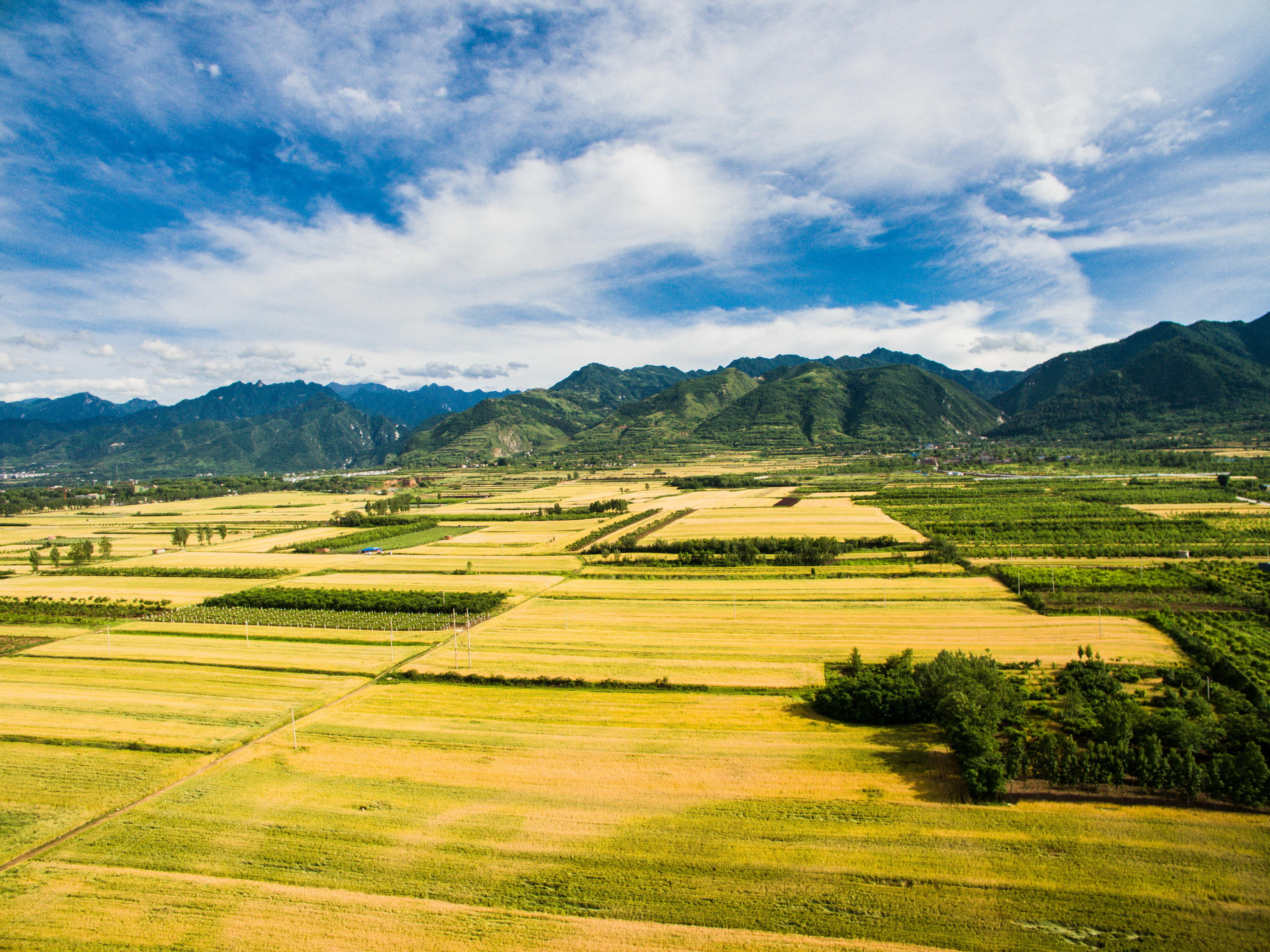
The Northeastern Plain has fertile soils and large deposits of coal and iron ore. Most of the region’s people live on the southern part of the plain near the Liao River.
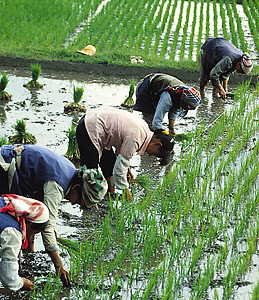
Farther south, the wide, flat North China Plain lies in the valley of the Huang He. Wheat is the main crop in this highly productive agricultural area. Major flooding formerly occurred in the valley, which earned the river the nickname China’s Sorrow. Today, dams, dikes, and reservoirs, and the use of river water for irrigation, control most floods. The Grand Canal, the world’s longest artificially created waterway, extends about 1,000 miles (1,600 kilometers) across the North China Plain.
The lower Yangtze Valley has the best combination of level land, fertile soil, and rainfall anywhere in China. In the so-called Fertile Triangle between Nanjing, Shanghai, and Hangzhou, the population density is extremely high. The Yangtze River and its many tributaries have long formed the most important water route for trade within China.
The Central Uplands
are an area of hills and mountains between the Eastern Lowlands and the Tibetan Highlands. The Qinling mountain range is the region’s chief physical feature. Its peaks rise more than 12,000 feet (3,658 meters) above sea level and cross the region from east to west. The range forms a natural barrier against seasonal winds that carry rain from the south and dust or cold air from the north. To the north of the mountains are dry wheat-growing areas. To the south lie warm, humid areas where rice is the major crop.
The Sichuan Basin,
a large basin surrounded by high mountains, lies southwest of the Central Uplands. Its mild climate and long growing season make it one of China’s main agricultural regions. Most crops are grown on terraced fields—level strips of land cut out of the hillsides. The name Sichuan means Four Rivers and refers to the four streams that flow into the Yangtze River in the region. The rivers have carved out deep gorges in the region’s red sandstone, which makes land travel difficult. The completion of the Three Gorges Dam on the Yangtze River allows some ocean-going ships to reach Chongqing in the Sichuan Basin.
The Southern Uplands
cover southeastern China, including the island of Hainan. The Southern Uplands are a region of green hills and mountains. The river deltas of the Xi Jiang (West River) and the Min are almost the only flat areas in the region. The Xi Jiang and its tributaries form the main transportation route for southern China. Deep, rich soils and a tropical climate help make the delta area an extremely productive agricultural region.
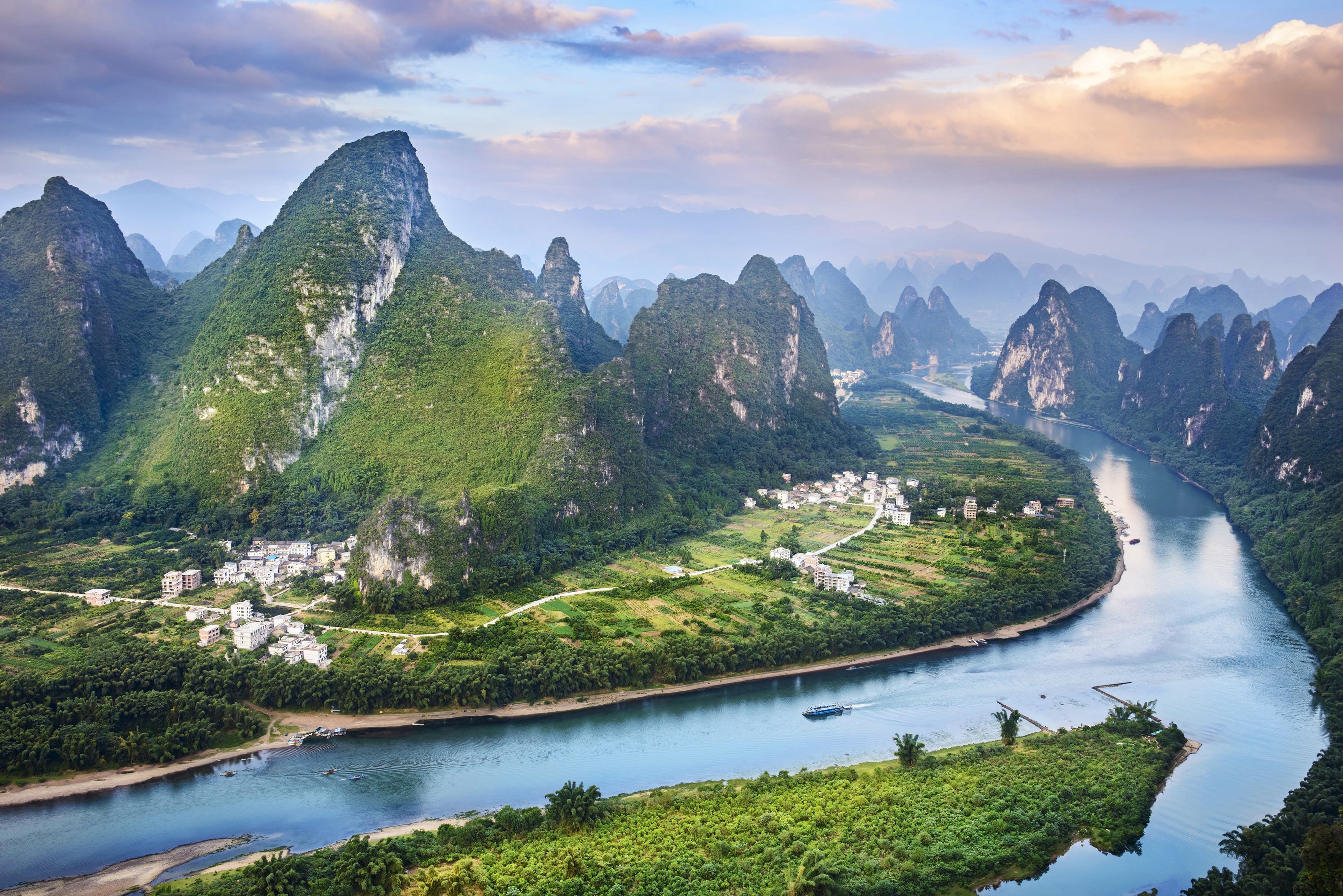
Much of the Southern Uplands is so hilly and mountainous that little land can be cultivated, even by terracing. The central part of the region, near the city of Guilin, is one of the most scenic areas in China. It has many isolated limestone hills that rise 100 to 600 feet (30 to 182 meters) almost straight up.
Climate
China has a wide range of climates because it is such a large country and has such a variety of natural features. The most severe climatic conditions occur in the Taklimakan and Gobi deserts. Daytime temperatures in these deserts may exceed 100 °F (38 °C) in summer, but nighttime lows may fall to –30 °F (–34 °C) in winter. Tibet and Heilongjiang province in northeastern China have long, bitterly cold winters. In contrast, coastal areas of southeastern China have a tropical climate.
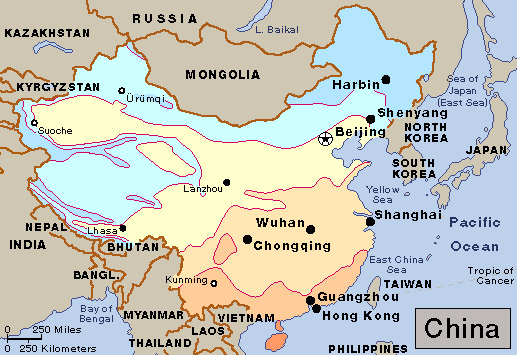
Seasonal winds called monsoons greatly affect China’s climate. In winter, monsoons carry cold, dry air from central Asia across China toward the sea. These high winds often create dust storms in the north. From late spring to early fall, the monsoons blow from the opposite direction and spread warm, moist air inland from the sea. Because of the monsoons, more rain falls in summer than in winter throughout China. Most parts of the country receive more than 80 percent of their rainfall from May to October.
Summers tend to be hot and humid in southeastern China and in the southern parts of the Northeast. In fact, summer temperatures average about 80 °F (27 °C) throughout much of China. However, northern China has longer and much colder winters than the south has. In January, daily low temperatures average about –13 °F (–25 °C) in Heilongjiang and about 20 °F (–7 °C) throughout much of the eastern third of the country. However, the coastal areas of the Southern uplands are much warmer. Mountains shield southern China and the Yangtze Valley west of Wuhan from the winter winds. The Sichuan Basin is especially well protected, and frost occurs only a few days each winter.
The amount of precipitation varies greatly from region to region in China. The deserts of Xinjiang and Inner Mongolia receive less than 4 inches (10 centimeters) of rain yearly. More than 40 inches (100 centimeters) of rain falls each year in many parts of southeastern China. Some areas near the southeastern coast receive up to 80 inches (200 centimeters) annually. In northern China, the amount of precipitation varies widely from year to year. However, most areas in northern China receive less than 40 inches (100 centimeters) yearly. For example, annual precipitation averages about 25 inches (63 centimeters) in Beijing and 28 inches (70 centimeters) in Shenyang. Snowfalls occur only in the north. But even there, they are infrequent and usually light.
Economy
China has one of the world’s largest economies in terms of its gross domestic product (GDP), the value of all goods and services it produces in a year. In terms of per capita (per person) GDP, however, China ranks near the middle compared to other countries in the world.
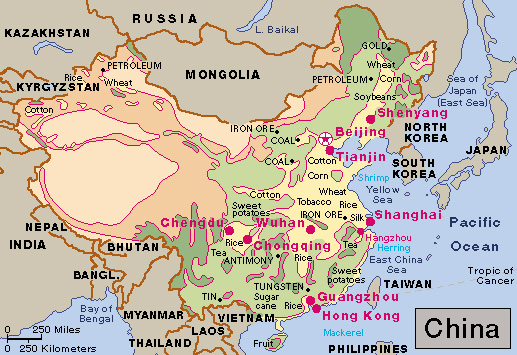
The national government exercises much control over China’s economy. It controls the most important industrial plants and operates most of the nation’s banks, most long-distance transportation, and foreign trade. It also sets the prices of certain key goods and services.
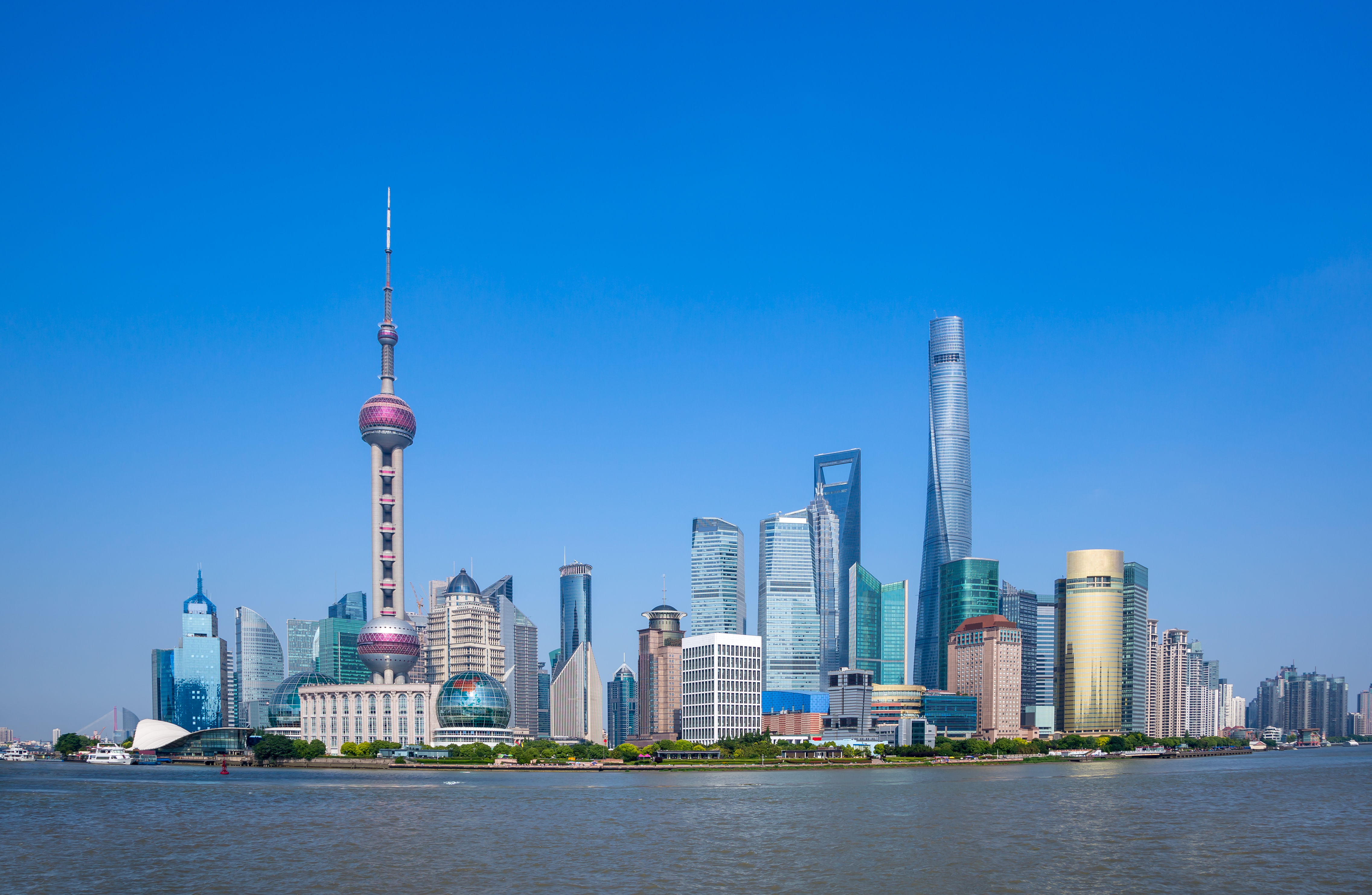
China’s Communist government makes national economic plans that cover five-year periods. These plans determine how the government will work to improve different areas of the economy.
In the early 1980’s, the Chinese government began a series of economic reforms that led to less government control over some business activities. Since then, the number of privately owned and operated businesses has increased dramatically. Many experts believe the increased ownership of business has contributed significantly to China’s economic growth. However, it has also led to increased unemployment and labor migration.
In the 1990’s, the government began spending huge amounts of money to improve China’s infrastructure (roads, bridges, dams, and other public works). These projects include the Three Gorges Dam, canals to bring water from the south to the north, and subway systems in major cities.
China’s economy continued to grow in the 2000’s and 2010’s. China became the world’s largest manufacturer. However, the rapid growth led to such problems as pollution and income inequality. By 2020, China’s government had begun to plan a shift in its focus on development, from manufacturing to consumer services and high technology. Planners hoped the resulting growth, though less rapid, would be more sustainable.
Manufacturing and mining
contribute more to China’s GDP than any other category of economic activity. Shanghai is one of the world’s leading manufacturing centers. Its industrial output exceeds that of any other place in China. Beijing and Tianjin are also important industrial centers. Others include Shenyang and Harbin in the Northeast; Guangzhou, Hangzhou, Shenzhen, and Wuhan in southeastern China; and Chengdu and Chongqing in the Sichuan Basin.
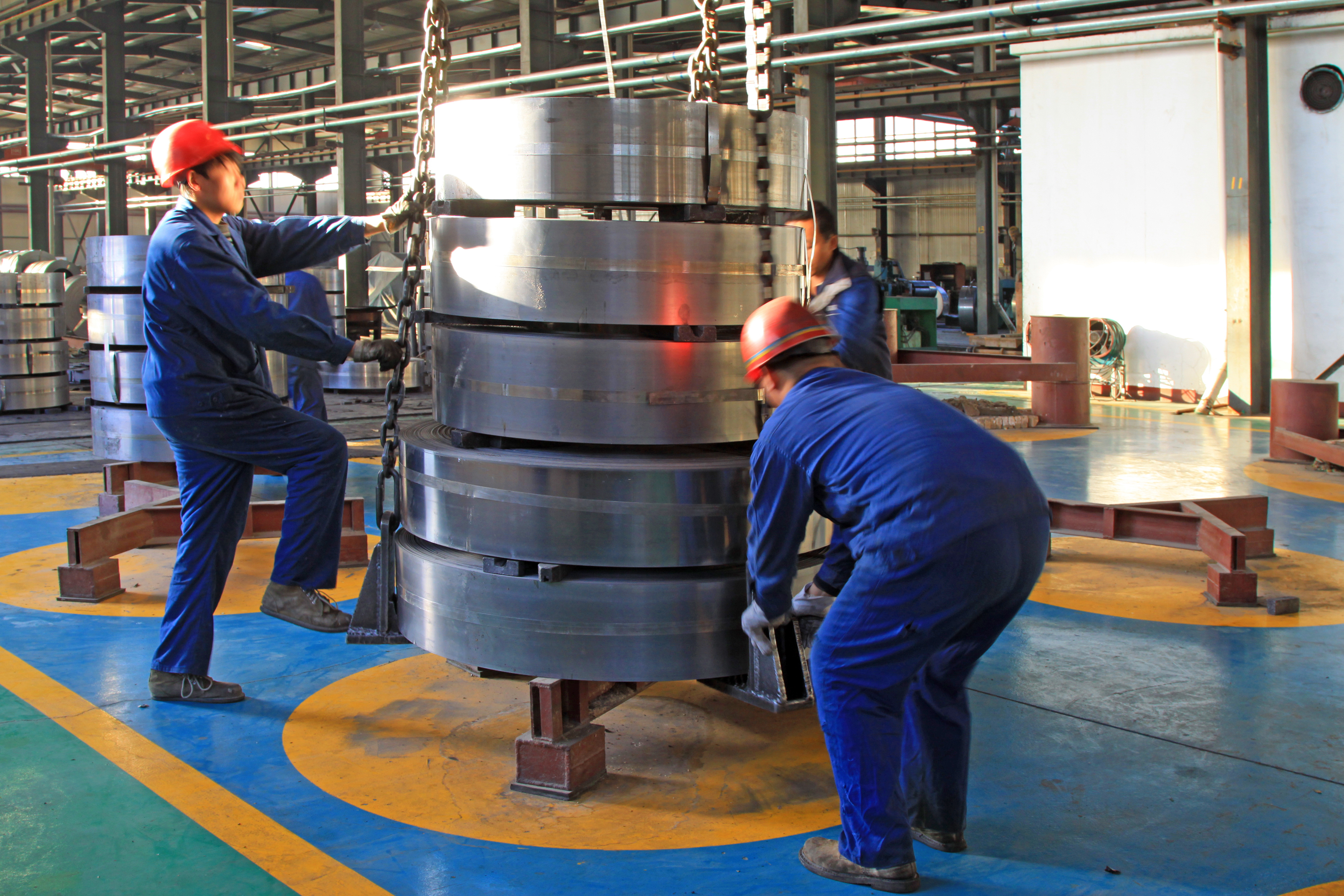
After the Communists came to power, they began to rebuild China’s factories in an effort to make the nation an industrial power. They concentrated on the development of heavy industries, such as the production of metals and machinery. Today, China produces more steel than any other country. The machine-building industry provides metalworking tools and other machines for new factories. Other major manufactured products include aircraft, automobiles, cement and other building materials, fertilizer and other chemicals, military equipment, ships, tractors, and trucks.
The largest consumer goods industries include the clothing and textile industry, the food-processing industry, and electronics. As the standard of living in China has improved, demand has grown for such consumer goods as automobiles, refrigerators, and television sets. As a result, China has increased its production of consumer items.
To help continue the country’s industrial expansion, China’s leaders made contracts with foreign companies to modernize factories and to build new ones. The government is also improving and expanding scientific and technical education in China and sending students abroad for training. However, waste and inefficiency in industry remain problems.
China is the world’s largest producer and user of coal. Coal deposits lie in many parts of China, but the best fields are in the north. Coal-burning plants provide about 60 percent of China’s electric energy. Hydroelectric plants and oil-burning plants supply most of the rest. The largest oil field in China is at Daqing in Heilongjiang. Other major Chinese oil fields include those at Dagang, near Tianjin; at Liaohe, in Liaoning; at Shengli on the Shandong Peninsula; in the Xinjiang Autonomous Region; and offshore in the Pacific Ocean.
China is a leading producer of iron ore. Most of the ore comes from large, low-grade deposits in the northeastern provinces. Mines in the central and southwestern parts of the country also yield iron ore.
China outranks all other countries in the production of many mined products, including aluminum, lead, manganese, magnesium, salt, tin, tungsten, and zinc. It is a leading producer of copper, gold, and silver.
Service industries
provide services rather than produce goods. They include banking and finance; communication; education; health care; insurance; recreation; trade; and transportation. Together, they contribute about half of China’s GDP and employ about half of the nation’s workers.

Tourism has become an important part of this economic sector. Each year, tens of millions of tourists visit China from Japan, Russia, South Korea, the United States, and other countries. Tens of millions of Chinese people travel within their country.
Agriculture
contributes less than one tenth of China’s GDP, but it employs approximately a quarter of the nation’s workers. In southeastern and east-central China, farmers grow cotton, rice, sweet potatoes, tea, and wheat. Much corn is grown in the northeast. China produces more apples, cabbages, carrots, cotton, pears, potatoes, rice, sweet potatoes, tea, tobacco, tomatoes, and wheat than any other country. In addition, it is a leading producer of corn, melons, rubber, soybeans, sugar beets, and sugar cane. Farmers in the far south of China grow tropical crops, such as bananas, oranges, and pineapples.


In rural areas, many families raise chickens and ducks. China has more domesticated ducks than any other country. Many farmers raise hogs for both meat and fertilizer. China has about half of all the hogs in the world. China also has many beef and dairy cattle, goats, horses, and sheep.
Only about 15 percent of China’s land area can be cultivated. Thus, farmers have little cropland on which to grow food for themselves and the rest of the country’s huge population. Nevertleless, they manage to provide almost enough food for all the people. Southern China has a long growing season, so farmers there can grow two or more crops on the same land each year. However, droughts and floods often interrupt production. Chinese farmers work mostly by hand with simple tools. They use irrigation and fertilizers and practice soil conservation.
During the 1950’s, the Communists collectivized China’s agriculture. They organized the peasants to farm the land cooperatively in units called communes. In the 1980’s, emphasis on communes declined, and individual families farmed more of the land. The families must pay taxes on their land and must sell an agreed amount of farm products to the state at a fixed price. They may then sell their surplus crops at farm markets, sometimes to city dwellers.
Fishing industry.
China has the world’s largest fishing industry. The Chinese catch tens of millions of tons of fish, shellfish, and other seafood annually. Important catches include anchovies, mackerel, shrimp, and squid. Aquaculture, the commercial raising of animals and plants that live in water, is an important industry in China. China leads the world in aquaculture production. Fish farmers raise fish in ponds both for food and for use in fertilizer. Carp, oysters, scallops, and shrimp are among the leading aquaculture products.
Forestry.
China is a world leader in producing forest products. Its timber industry is concentrated in the southeastern and northeastern parts of the country. But China does not produce enough timber to meet its own needs and must import many forest products.
International trade
is vital to China’s economic development. Foreign investments help China increase its imports and exports. In 1999, China signed a landmark trade agreement with the United States that lowered many barriers to trade. In 2001, China joined the World Trade Organization, a group that promotes international trade. In the following decades, China’s share of international trade grew rapidly. In 2005, it became Japan’s largest trading partner, replacing the United States. China also has extensive trade with the nations of the European Union. However, the United States remains China’s largest individual trading partner. The growing trade deficit of the United States in the 2010’s contributed to economic tension between the world’s two largest economies.
China imports less than it exports. China imports machinery and other technology needed to modernize the economy. Other leading imports include chemicals, metals, and petroleum and petroleum products. China’s main exports include clothing, electronic devices, food, furniture, textiles, and toys. Much of China’s international trade passes through Hong Kong. China’s chief trading partners include Germany, Japan, South Korea, and the United States.
Transportation
in China is a blend of the ultramodern and traditional. For example, Beijing’s Daxing International Airport, which opened in 2019, is an enormous single-terminal airport boasting many unique technological innovations. Yet for movement across short distances, many rural inhabitants still rely on such simple, traditional methods of transportation as animal-drawn carts or on poles carried across their shoulders with loads hanging from them. Bicycles, motor scooters, taxis, and buses also are widely used for local travel. China’s large cities experience frequent traffic gridlock.

Railroads make up the most important part of China’s modern transportation system. Rail lines, including the world’s largest high-speed rail network, link the major cities and manufacturing centers. The railroads transport both freight and passenger traffic.
China has an extensive network of roads that reaches almost every town in the nation. Only the United States and India have more miles of roads. Highway traffic in China consists mostly of trucks and buses. On rural roads, tractors are common. Many cars are owned by government agencies or taxi companies, but growing numbers of Chinese are buying them for personal use.
Ships transport freight, and boats carry passengers and light loads on several Chinese rivers, especially the Yangtze. The Grand Canal, completed about A.D. 1327, extends about 1,000 miles (1,600 kilometers) from Hangzhou in the south to Beijing in the north. However, silt deposits clog the canal, and only part of it still serves as a water route.

China has many of the world’s largest ports, including Dalian, Guangzhou, Hong Kong, Ningbo-Zhoushan, Qingdao, Shanghai, Tianjin, and Xiamen. The chief airports are at Beijing, Guangzhou, Hong Kong, and Shanghai, but many other cities have airports. Chinese and foreign airlines link China with cities around the world.
Communication
in China comes under strict government control. During the early years of Communism, newspapers, radio, and television were devoted mostly to political propaganda. In the 1980’s, the government began allowing the media to provide general information and entertainment. Educational programs, concerts, plays, and films often appear on television.
Hundreds of newspapers are published in China. The government and the Chinese Communist Party publish or support most of these. One of China’s leading newspapers is Cankao Xiaoxi (Reference News), a paper that contains articles from news sources around the world translated into Chinese. Other leading newspapers include Gongren Ribao (Worker’s Daily); Nanfang Ribao (Southern Daily); Nongmin Ribao (Farmers’ Daily); Renmin Ribao (People’s Daily), the official paper of the Communist Party; and Zhongguo Qingian Bao (China Youth Daily). The Xinhua (New China) News Agency is the nation’s official news agency. Popular online news sites include Xinhua and People’s Daily Online.
In 1978, people in Beijing began to criticize government policies using a kind of poster written in large charcters that had been used in the past to publicize political opinions. These big-character posters began to call for democratic reforms. The wall on which they were hung became known as the Democracy Wall. In 1979, the government forbade posters that criticized its policies. Now, posters typically give such information as tips on health and physical fitness.
Radios and televisions are widespread throughout China, although radio programs are still broadcast over loudspeakers in some rural areas. A village or other group of people sometimes buys a television set and places it in a common area for public use.
In the 1990’s, the telephone system that had been reserved for official purposes was expanded to allow private use. Today, however, cellular telephones are more popular, especially in the cities. By 2012, the number of cell phones in China had already surpassed a billion. People also use the state-run postal system for personal communication.

The internet is popular, but the government tightly regulates its use. Although the government blocks such major foreign sites as Facebook, YouTube, and Google, China is the world’s largest social media market. Popular Chinese social media platforms include Weibo and WeChat. The most popular video sharing site is Douyin, known as TikTok outside of China. Youku hosts television and films. In spite of government monitoring and censorship, some people in China use the internet to express their political views, much as the big-character posters were used in the late 1970’s.
History
The oldest written records of Chinese history date from about 1500 B.C., during the Shang dynasty. These records are in the form of oracle bones—notations scratched on thousands of turtle shells and animal bones. About 100 B.C., the Chinese historian Sima Qian wrote the first major history of China. Through the centuries, the Chinese always kept detailed records of the events of their times.
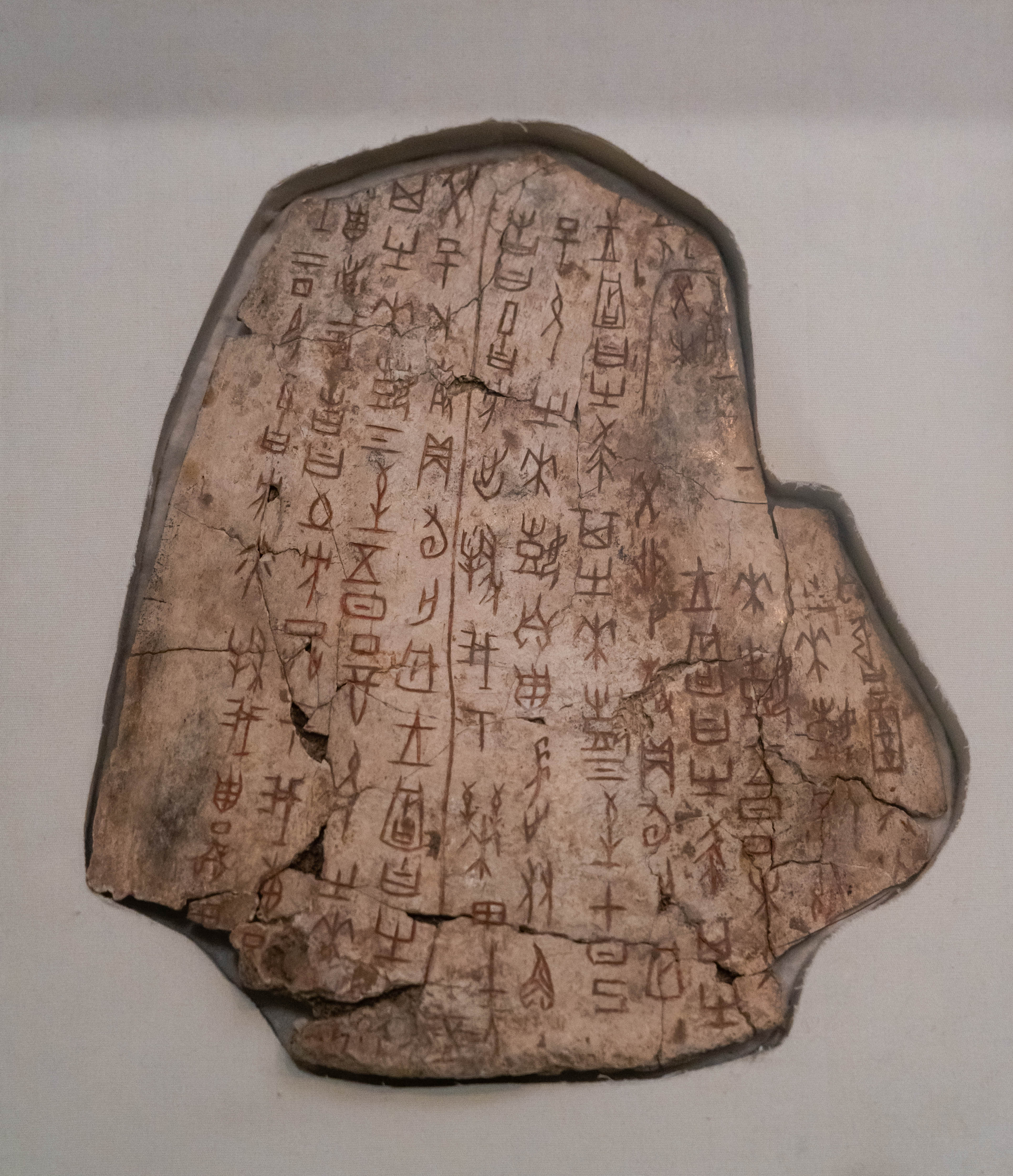
Beginnings of Chinese civilization.
People lived in what is now China long before the beginning of written history. Early human beings probably inhabited parts of eastern China more than 1 million years ago. Prehistoric human beings known as Homo erectus lived between about 770,000 and 400,000 years ago near what is now Beijing in northern China (see Peking fossils). By about 10,000 B.C., a number of cultures had developed in this area. From two of them—the Yangshao and the Longshan—a distinctly Chinese civilization gradually emerged.
The Yangshao culture reached the peak of its development about 3000 B.C. The culture, which extended from the central valley of the Huang He to the present-day province of Gansu, was based on millet farming. About the same time, the Longshan culture spread over much of what is now the eastern third of the country. The Longshan people lived in walled communities, cultivated rice, and raised cattle and sheep.
The first dynasties.
The Xia culture, which some scholars consider China’s first dynasty, arose during the 2100’s B.C. For many years, experts doubted that the Xia really existed and thought they were only part of Chinese mythology. However, archaeologists found evidence of the culture’s existence in what is now Henan province.
The Shang dynasty arose from the Longshan and Xia cultures. Based on early written records, scholars traditionally dated its start at about 1766 B.C. But now some scholars believe it may have begun about 1600 B.C. The Shang kingdom was centered in the eastern Huang He Valley. It became a highly developed society governed by a hereditary class of aristocrats. The dynasty’s accomplishments included magnificent bronze vessels, horse-drawn war chariots, and a system of writing.
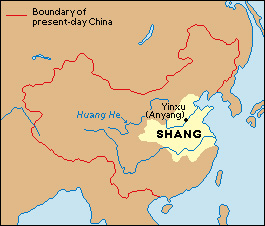
About 1045 B.C., the Zhou people overthrew the Shang from the west and established their own dynasty. The Zhou dynasty ruled China until 256 B.C. The dynasty directly controlled only the western part of their territory. To the east, the Zhou gave authority to certain followers. These followers became lords of semi-independent states. As time passed, these lords grew increasingly independent of the royal court and so weakened its power. In 771 B.C., invaders forced the Zhou to abandon their capital, near what is now Xi’an, and move eastward to Luoyang. Battles between the Zhou rulers and with non-Chinese invaders further weakened the dynasty.
About 500 B.C., the great philosopher Confucius proposed new moral standards to replace the magical practices of his time. During the later Zhou period, there were seven eastern states. The rulers of these states fought one another for the control of all China. In 221 B.C., the Qin state defeated the last of its rival states and established China’s first empire controlled by a strong central government. The Qin believed in a philosophy called Legalism, and their victory resulted partly from following Legalistic ideas. Legalism emphasized the importance of authority, efficient administration, and strict laws. A combination of Legalistic administrative practices and Confucian moral values helped the Chinese empires endure for more than 2,000 years.

The Qin dynasty
lasted only until 206 B.C., but it brought great changes that influenced all later empires in China. The first Qin emperor, Shi Huangdi, abolished the local states and set up a strong central government. His government standardized weights and measures, the currency, and the Chinese writing system. To keep out invaders, he ordered the construction of the Great Wall of China. Laborers built the wall by joining shorter walls constructed during the Zhou dynasty. Parts of the wall were added to, rebuilt, and moved by later dynasties. Much of what is now known as the Great Wall was built during the Ming dynasty (1368-1644). This portion of the Great Wall extends from the Bo Gulf of the Yellow Sea to the Jiayu Pass in what is now Gansu province in western China. It stretches about 5,500 miles (8,850 kilometers), including about 3,890 miles (6,260 kilometers) of handmade walls as well as such natural barriers as rivers and hills. Experts believe that the full extent of the Great Wall, including sections predating the Ming dynasty, measures about 13,170 miles (21,200 kilometers).
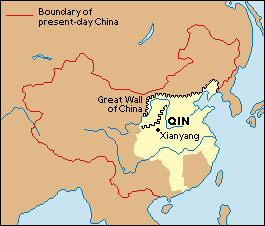

Shi Huangdi taxed the Chinese people heavily to support his military campaigns and his vast building projects. These taxes and the harsh enforcement of laws led to rebellion and civil war soon after his death in 210 B.C. The Qin dynasty collapsed four years later.
The Han dynasty
then gained control of China. It ruled from 206 B.C. to A.D. 220. During the Han period, Confucianism became the philosophical basis of government. Aristocrats held most important state offices. However, a person’s qualifications began to play a role in the selection and placement of officials. Chinese influence spread into neighboring countries, and overland trade routes linked China with Europe for the first time.
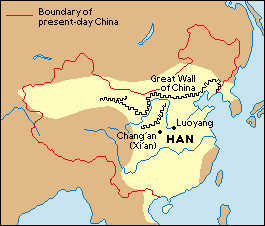
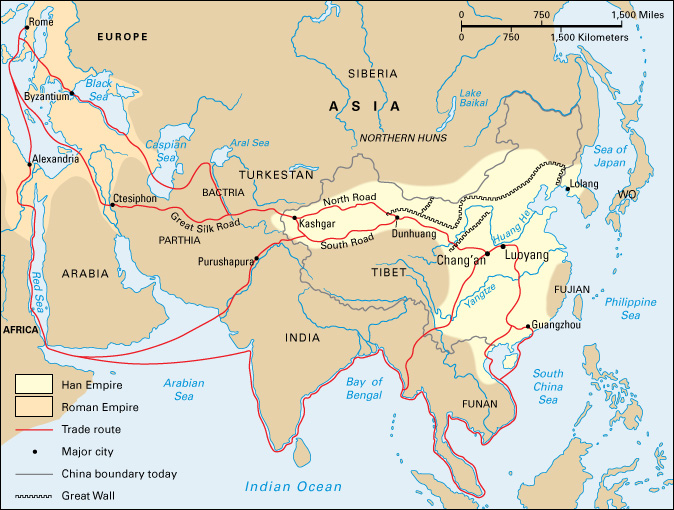
In A.D. 9, a Han official named Wang Mang seized the throne and set up the Xin dynasty. However, the Han dynasty regained control of China by A.D. 25. Art, education, and science thrived. Writers produced histories and dictionaries. They also collected classics of literature from earlier times. During the late Han period, Buddhism was introduced into China from India.
Political struggles at the royal court and administrative dishonesty plagued the last century of Han rule. In addition, powerful regional officials began to mistreat the peasants. As a result, large-scale rebellion finally broke out, and the Han dynasty fell in 220.
The period of division.
China then split into three competing kingdoms. Soon afterward, nomadic groups invaded northern China. A series of Chinese and non-Chinese dynasties ruled all or part of the north from 304 to 581. Six dynasties followed one another in the south from 222 to 589. During this period of division, Buddhism spread across China and influenced all aspects of life.
The brief Sui dynasty (581-618) reunified China when it absorbed the last southern dynasty in 589. By 610, the Grand Canal linked the Yangtze Valley with northern China. The canal made the grain and other products of the south more easily available to support the political and military needs of the north.
The Tang dynasty
replaced the Sui in 618 and ruled China for nearly 300 years. The Tang period was an age of prosperity and great cultural accomplishment. The Tang capital at Chang’an (now Xi’an) had more than a million people, making it the largest city in the world. It attracted diplomats, traders, poets, and scholars from throughout Asia. Some of China’s greatest poets, including Li Bo and Du Fu, wrote during the Tang period. Buddhism, in forms adapted to Chinese ways, remained an enormous cultural influence. Distinctly Chinese schools of Buddhism spread, including Chan (Zen) and Qingtu (Pure Land). In 690, the emperor’s mother, Wu Zetian, seized the throne and became the only woman in Chinese history to rule in her own name. Empress Wu was an able but ruthless ruler. She was overthrown in 705.

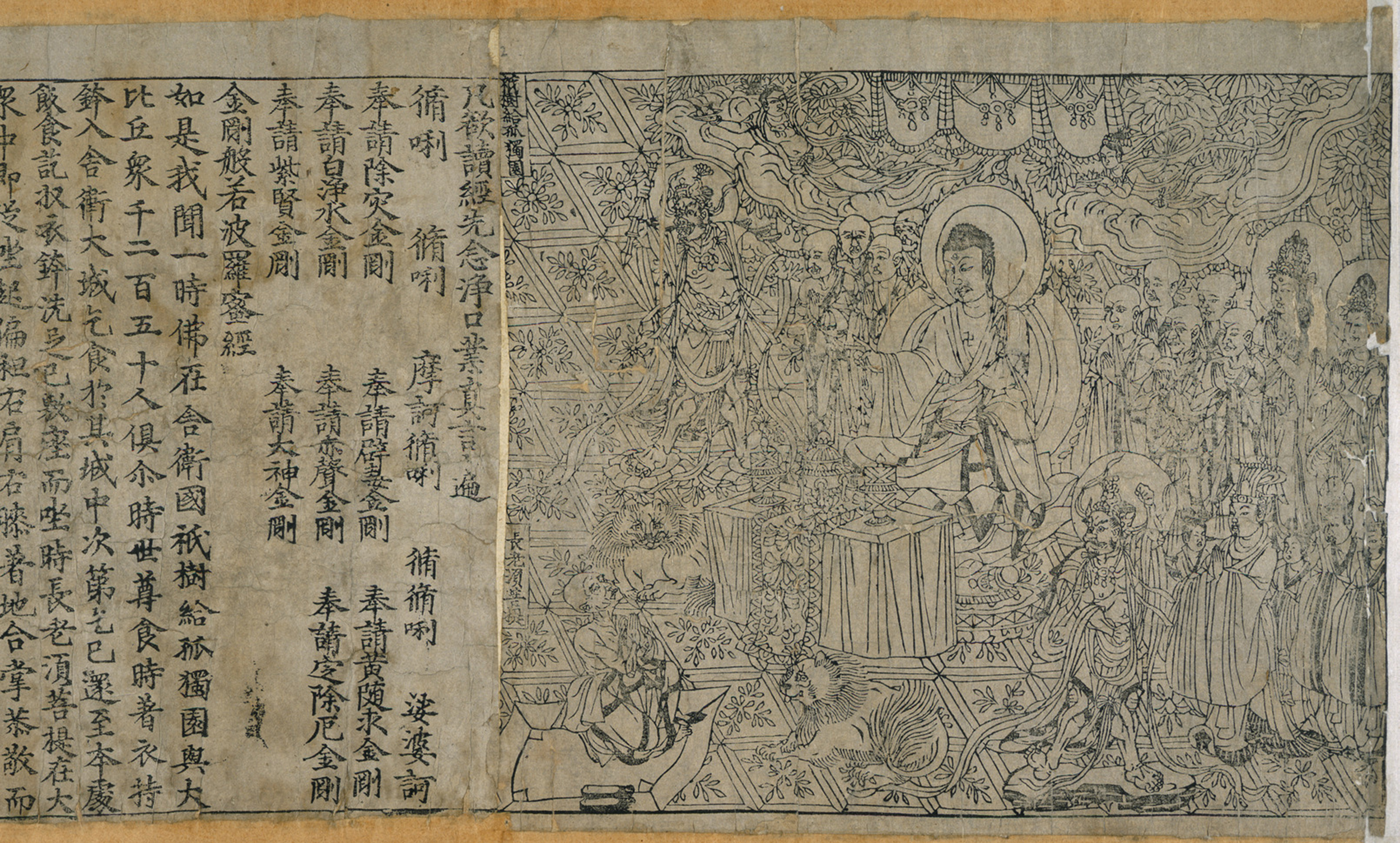
In 755, a rebellion led by a northern general named An Lushan touched off a gradual decline in Tang power. A series of rebellions in the late 800’s further weakened the Tang empire, which finally ended in 907. During the period that followed, a succession of “Five Dynasties and Ten Kingdoms” struggled for control of the empire. In 960, the Song dynasty reunified China.
The Song dynasty
brought major changes that affected China throughout the remaining empires. The Song rulers firmly established a system of civil service examinations that had begun during the Han period. They thus completed the shift of social and political power from aristocratic families to officials selected on the basis of talent. Another significant change was the development of Neo-Confucianism, which combined the moral standards of traditional Confucianism with elements of Buddhism and Taoism. The philosopher Zhu Xi was largely responsible for this new Confucianism. The Song dynasty established Neo-Confucianism as the official state philosophy, and all later Chinese dynasties continued to support it.
During the Song period, the introduction of early ripening rice made it possible to grow two or three crops a year in the south. The increased rice production helped lead to and support a rapid growth in the population, which for the first time exceeded 100 million. Chinese inventions during this period included a handheld gun and movable type for printing. Literature, philosophy, and history flourished. In the fine arts, the great Song achievements were hard-glazed porcelains and magnificent landscape paintings.
The Song dynasty suffered from frequent attacks by nomadic peoples from the north. By 1127, it had lost its hold in northern China to a rival dynasty from northeastern China. The Song then moved their capital from Kaifeng to Hangzhou on the wealthy lower Yangtze Delta. The dynasty that ruled from 960 to 1127 is often called the Northern Song, and the dynasty that ruled after 1127 is called the Southern Song.
Mongol rule.
During the 1200’s, Mongol warriors swept into China from the north. The Mongol leader Kublai Khan established the Yuan dynasty. It controlled all of China from 1279 to 1368, the first time that the entire country had come under foreign rule. During the Yuan period, Europeans became increasingly interested in China because of the reports of travelers and traders. The most enthusiastic reports came from Marco Polo, a trader from Venice. He claimed that he traveled widely in China from 1275 to 1292, and he gave glowing accounts of the highly civilized country known by Europeans as Cathay.
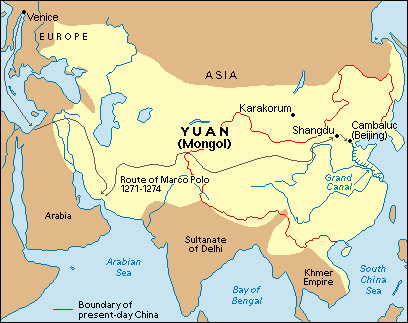
The Mongols ruled China harshly. During the mid-1300’s, rebellions drove the Mongols out of China and led to the establishment of the Ming dynasty.
The Ming dynasty
ruled from 1368 to 1644, a period of stability, prosperity, and revived Chinese influence in eastern Asia. Ming fleets—the largest the world had ever seen—sailed through Southeast Asia to Arabia and eastern Africa, projecting the power of the Ming court. Ming armies fought to extend and protect Chinese influence in Vietnam, Mongolia, and Korea. The arts flourished again. The era’s literature included three of China’s great classical novels—Romance of the Three Kingdoms, Water Margin, and Journey to the West. The Ming rulers distrusted the European traders who visited China in the late 1500’s and the 1600’s, but they allowed Roman Catholic missionaries to serve at court because of the missionaries’ skill in astronomy. Though also viewed with suspicion, the missionaries succeeded in converting some influential Chinese officials.
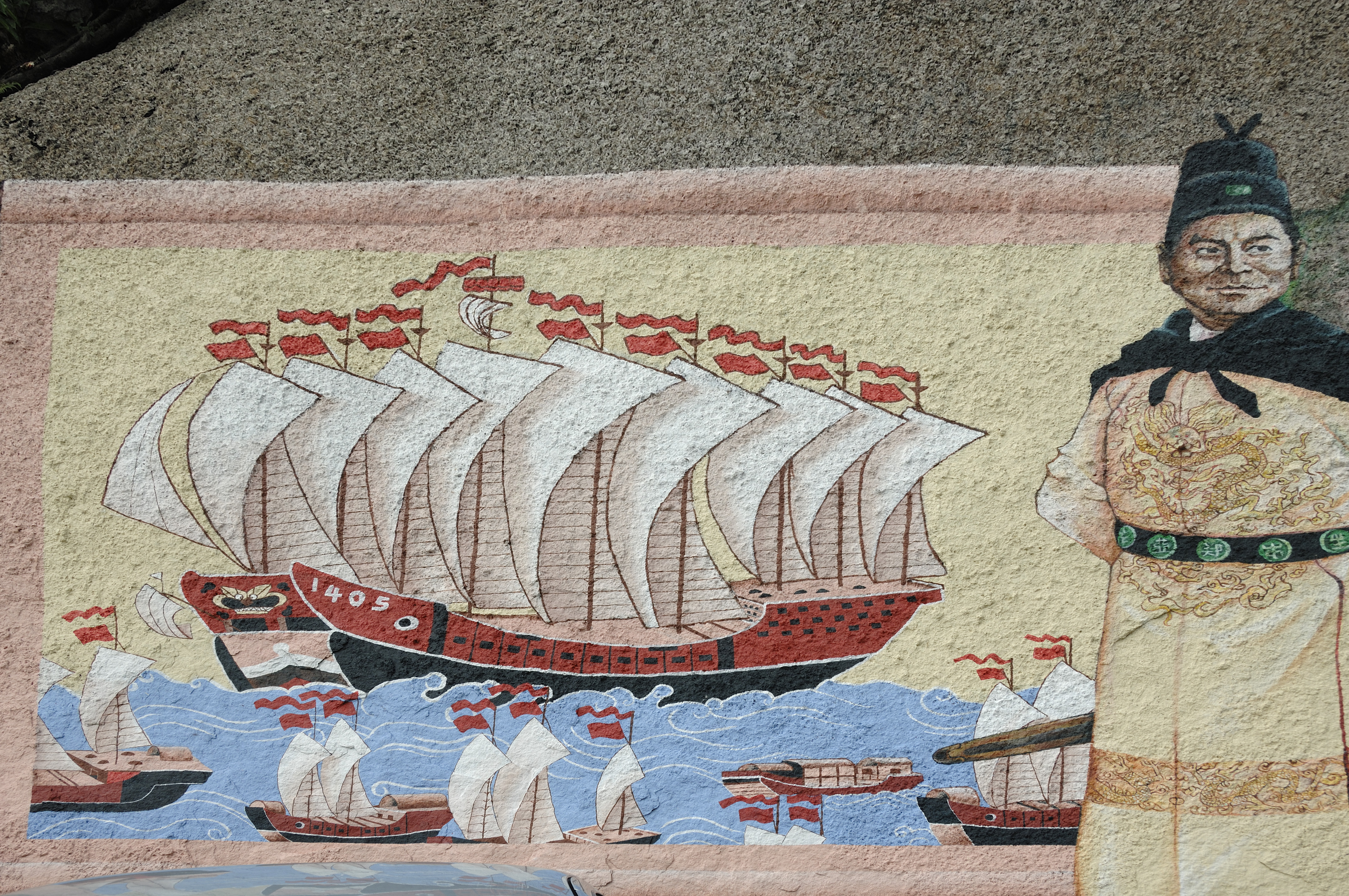
The early rule of the Manchus.
In 1644, the Manchus from northeastern China invaded Beijing, the Ming capital, and established the Qing dynasty. The Manchus ruled China until 1912. Like the Mongols, the Manchus came from beyond the Great Wall. Unlike the Mongols, the Manchus had adopted many elements of Chinese culture before they gained control of the empire. The Manchus strongly supported Neo-Confucianism and modeled their political system after that of the Ming.
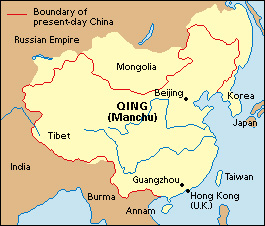

From 1669 to 1796, the Qing empire prospered. Chinese influence extended into Mongolia, Tibet, and other parts of central Asia. Commerce and the handicraft industry built up the economy. Agricultural output increased as China’s population expanded rapidly, doubling from about 150 million in 1700 to about 300 million by 1800.
By the late 1700’s, the standard of living in China began to decline as the population grew faster than agricultural production. In the 1770’s, political dishonesty began to plague the Qing administration. In 1796, the worsening conditions touched off a rebellion, led by an anti-Manchu secret society. The rebellion lasted until 1804 and greatly weakened the Qing dynasty.
The dynastic cycle.
Chinese historians noticed a pattern to the rise and fall of China’s dynasties. They saw that dynasties usually began with a strong ruler who established an empire, often using ruthless means. Once established, the dynasty would expand and make great contributions to Chinese culture. Later rulers would become corrupt and neglect the empire, which eventually would weaken and fall after a rebellion. From the chaos that followed, a new strong leader would emerge, and the cycle would begin again.
Many Chinese people believed the cyclic pattern could help them predict what would happen next to a dynasty. Peasants added the idea that natural events, such as earthquakes, were signs that things were about to change. These ideas continue to influence Chinese thought today.
Clash with the Western powers.
Merchants from Europe and North America had little effect on China before the 1800’s. The Chinese government permitted foreign trade only at the port of Guangzhou and severely limited contact between foreigners and the Chinese population. China exported large quantities of tea and silk to the West but purchased few goods in return. To balance their trade, British merchants began to bring opium to China during the late 1700’s. The Chinese had outlawed the importation of opium, so some merchants from Britian and other countries smuggled the drug.
Opium smuggling created much local disorder in China, and the large outflow of money to pay for the opium seriously disturbed the economy. In March 1839, Chinese officials tried to stop the illegal trade by seizing over 20,000 chests of opium from British merchants in Guangzhou. The First Anglo-Chinese War (also called the First Opium War) then broke out between China and the United Kingdom. The United Kingdom easily won the war, which ended with the Treaty of Nanjing in 1842.
The Treaty of Nanjing was the first of what the Chinese called the unequal treaties. It gave the Chinese island of Hong Kong to the United Kingdom and opened four more Chinese ports to British residence and trade. The Treaty of Nanjing also granted British officials the right to deal on equal terms with Chinese officials and to try criminal cases involving British citizens. China signed similar treaties with France and the United States in 1844. These treaties stated that any rights granted to one foreign power must also be given to the other nations. The Western nations thus acquired a common interest in maintaining their special privileges in China.

In 1858 and 1860—after China lost another war, sometimes called the Second Anglo-Chinese War or the Second Opium War, against the United Kingdom and France—China signed more treaties with France, Russia, the United Kingdom, and the United States. These treaties opened additional ports to trade, permitted foreign shipping on the Yangtze, and allowed missionaries to live on and own property in the interior of China. The treaties also called for the Western nations to establish permanent diplomatic offices in Beijing. The United Kingdom added the Kowloon Peninsula to its Hong Kong colony, and Russia received all Chinese territory north of the Amur River and east of the Ussuri River.
The Taiping Rebellion.
A series of uprisings in the mid-1800’s posed a serious threat to the survival of the Qing dynasty. The most important uprising was the Taiping Rebellion. It lasted from 1850 to 1864 and cost millions of lives. The Taipings were a religious group that combined Christian beliefs with ancient Chinese ideas for perfecting society. They challenged both the Qing dynasty and Confucianism with a program to divide the land equally among the people. During the rebellion, local Chinese officials organized new armies, which defeated the Taipings. The Qing received some military aid from the foreign nations that had signed the treaties. These nations wanted the dynasty to survive so the unequal terms of the treaties could remain in effect.
The Open-Door Policy.
A disastrous war with Japan in 1894 and 1895 forced China to give up its claim on Korea. China also had to give the Japanese the island of Taiwan, which the Qing had controlled since 1683. France, Germany, Italy, Japan, Russia, and the United Kingdom then forced the crumbling Qing empire to grant them more trading rights and territory. The division of China into a number of European colonies appeared likely. However, the Chinese people had begun to develop strong feelings of national unity. This growth of nationalism helped prevent the division of the country, as did rivalry among the foreign powers. None of the foreign powers would allow any of the others to become dominant in China. Beginning in 1899, the United States gradually persuaded the other Western powers and Japan to accept the Open-Door Policy, which guaranteed the rights of all nations to trade with China on an equal basis.
The Boxer Rebellion.
By the 1890’s, some Chinese people violently opposed the spread of Western and Christian influences in China. Chinese rebels formed secret societies to fight these influences. The best-known society was called the Boxers by Westerners because its members practiced Chinese ceremonial exercises that resembled shadowboxing. In the Boxer Rebellion of 1900, the Boxers attacked and killed Westerners and Chinese Christians. Although initially neutral, the Manchu court eventually supported the rebellion. A rescue force from the Western nations crushed the rebellion.
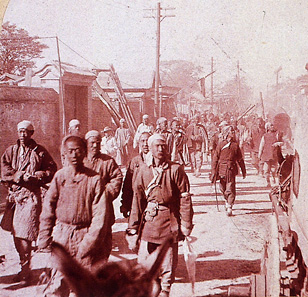
In the years following the Boxer Rebellion, the Manchus set out to reform the Chinese government and economy. They abolished the Confucian civil service examinations, established modern schools, and sent students abroad to study. They also organized and equipped a Western-style army. In addition, the Qing court reorganized the central government, promised to adopt a constitution, and permitted the provinces to elect their own legislatures.
The fall of the Manchus.
The Manchu reforms came too late to save the dynasty. A movement to set up a republic had been growing since the Japanese defeated China in 1895. In 1905, several revolutionary organizations that wanted China to become a republic combined to form the Revolutionary Alliance. They chose as their leader Sun Yat-sen, a Western-educated physician.

From 1905 to 1911, the rebels staged a series of unsuccessful armed attacks against the Manchus. Finally, on Oct. 10, 1911, army troops loosely associated with the Revolutionary Alliance revolted at Wuchang. By the year’s end, all the southern and central provinces had declared their independence from Manchu rule.
The early republic.
On Jan. 1, 1912, the leaders of the revolution formally established the Republic of China in Nanjing. They named Sun Yat-sen temporary president of the republic. The Manchus had called upon Yuan Shikai, a retired military official, to try to defeat the supporters of the republic. However, Yuan arranged a secret settlement with Sun and his followers. The last Manchu emperor, a 6-year-old boy named Pu Yi (also spelled Puyi), gave up the throne on Feb. 12, 1912. The following month, Yuan became president in place of Sun, who stepped down. Yuan quickly moved to expand his personal power.

In 1912, the former revolutionaries established the Nationalist Party (Kuomintang also spelled Guomindang). In 1913, they organized a revolt against Yuan. The revolt failed, and the Nationalist leaders fled to Japan. Yuan’s presidency became a dictatorship, and he took steps to establish himself as emperor. However, even Yuan’s own followers opposed the revival of the empire. A rebellion by military leaders in the provinces forced him to abandon his plans.
The warlord period.
Yuan Shikai died in 1916, and the power of the central government quickly crumbled. Presidents continued to hold office in Beijing, but the real power in northern China lay in the hands of warlords (local military leaders). In 1917, with the support of southern warlords, Sun Yat-sen set up a rival government in Guangzhou. By 1922, the republic had collapsed, and civil war was widespread.
Meanwhile, great changes occurred in Chinese culture and society. A journal called New Youth attacked Confucianism and presented a wide range of philosophies and social theories. On May 4, 1919, students in Beijing demonstrated against the Versailles Peace Conference. The conference permitted Japan to keep control of the German holdings it had seized in China during World War I (1914-1918). Other demonstrations that followed helped spread ideas presented by New Youth and other journals. This revolution in thought became known as the May Fourth Movement. It contributed greatly to the growth of Chinese nationalism and so strengthened the drive for political revolution.
In 1919, Sun began to reorganize the Nationalist Party and to recruit supporters from among students. At almost the same time, the first Communist student groups appeared in Beijing and other major cities. The Soviet Union, which had been formed in 1922 under Russia’s leadership, sent advisers to China in 1923 to help the Nationalists. The Soviets persuaded the Chinese Communists to join the Nationalist Party and to help it carry out the revolution. The party began to develop its own army and to organize workers and peasants to prepare for an attack on the northern warlords.
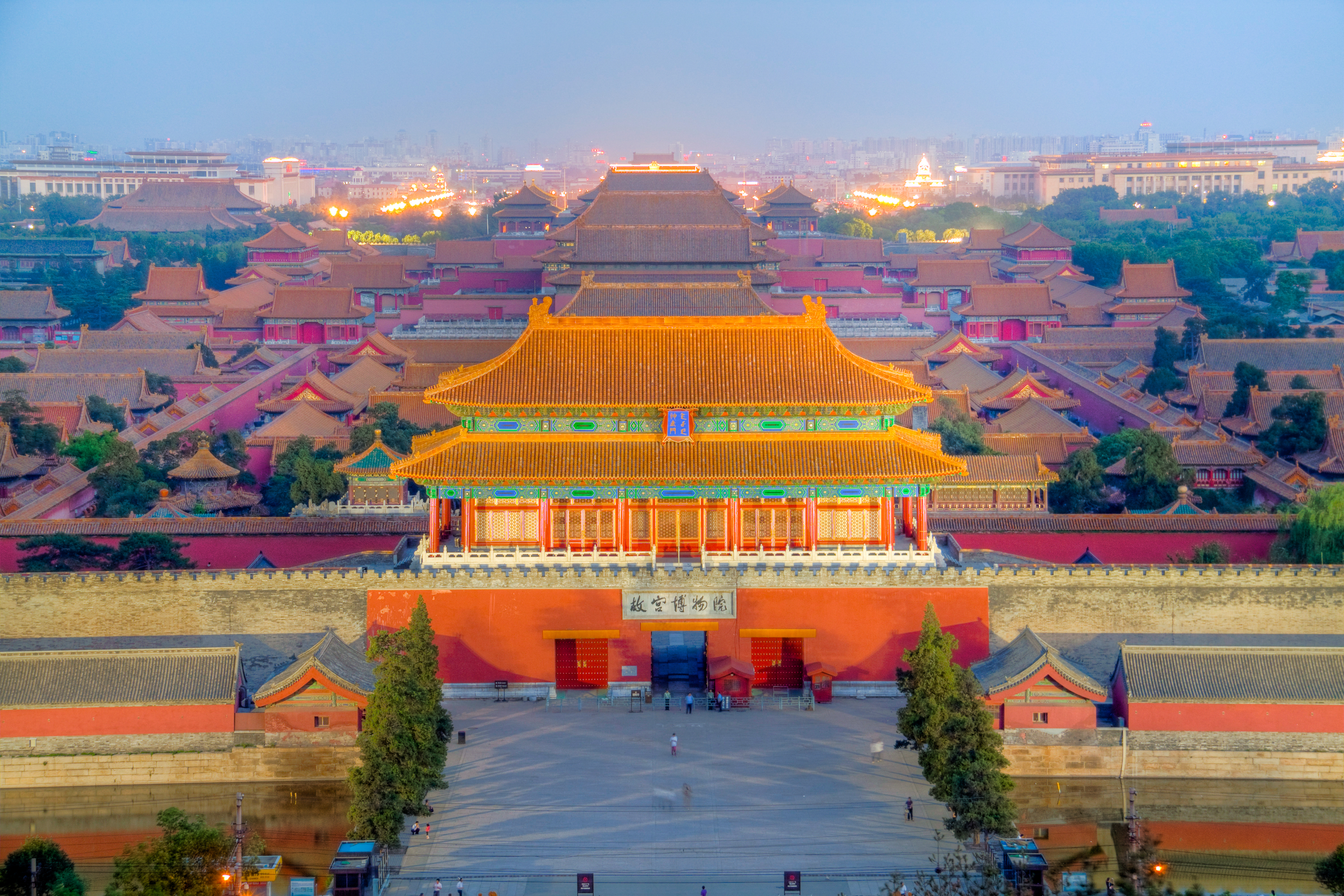
Sun Yat-sen died in 1925, and leadership of the Nationalist Party gradually passed to its military commander, Chiang Kai-shek. In 1926, the Nationalists began a campaign to defeat the northern warlords and soon won some major victories. In 1927, Chiang and his troops turned against the Communists and executed hundreds of members of Communist-backed labor unions in Shanghai. More attacks followed in other cities. Communist survivors fled to the hills in the province of Jiangxi in southern China. In 1928, the Nationalists captured Beijing and united China under one government for the first time since 1916.
Nationalist rule.
The Nationalist government was a one-party dictatorship that never gained full control of China. Communist opposition and Japanese aggression severely limited its power and accomplishments.
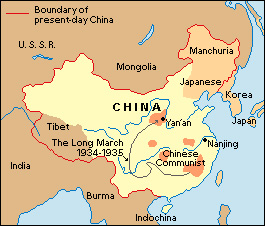
By 1931, the Communists had established a number of rural bases and set up a rival government in southern and central China. In 1934, Chiang Kai-shek’s armies forced the Communists to evacuate their bases and begin their famous Long March. By the fall of 1935, the Communists had marched more than 6,000 miles (9,700 kilometers) over a winding route to the province of Shaanxi in northern China. Of the approximately 100,000 Communists who began the march, only a few thousand survived to reach Shaanxi. During the march, Mao Zedong became the leader of the Chinese Communist Party.
While Chiang fought the Communists, the Japanese seized more Chinese territory. In 1931, the Japanese occupied Manchuria (which the Chinese now call Dongbei or the Northeast). They made the region a puppet state that they called Manchukuo. The Japanese then extended their military influence into Inner Mongolia and other parts of northern China. Chiang agreed to a series of Japanese demands because he felt unprepared to fight the Japanese until he had defeated the Communists.
Many students and intellectuals opposed Chiang’s giving in to Japan. They organized demonstrations and anti-Japanese associations. Dissatisfaction spread to troops from Manchuria who were blockading the Communist-held areas in the northwest. In 1936, the Manchurian forces kidnapped Chiang in Xi’an. He was released only after agreeing to end the civil war and to form a united front against the Japanese.
War with Japan.
The Japanese army launched a major attack against China in 1937. The Chinese resisted courageously, but Japanese armies controlled most of eastern China by the end of 1938. The Nationalist forces withdrew to the province of Sichuan, where they made Chongqing the wartime capital.
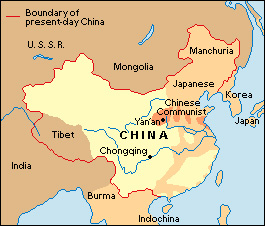
China joined the Allies in World War II on Dec. 9, 1941, two days after Japan attacked the United States at Pearl Harbor, Hawaii. In that war, the United Kingdom, the United States, the Soviet Union, and the other Allies fought Germany, Japan, and the other Axis powers. The Allies gave aid to China, but constant warfare against Japan exhausted China’s resources and strength. The cost of the war caused severe inflation , which led to government corruption and weakened the Chinese people’s support for the Nationalists.
For the Communists, the war against Japan provided an opportunity for political and military expansion. In northern China, they gained control of large areas that the Japanese army had overrun but lacked the forces to defend. The Communists enlarged their army and organized and trained the people to become productive party members. They also began a social revolution in the countryside, which included redistributing land to the peasants in Communist-controlled areas. When the war against Japan ended in August 1945, the Communists held an area in northern China with a population of about 100 million. In addition, they claimed to have an army of nearly 1 million soldiers.
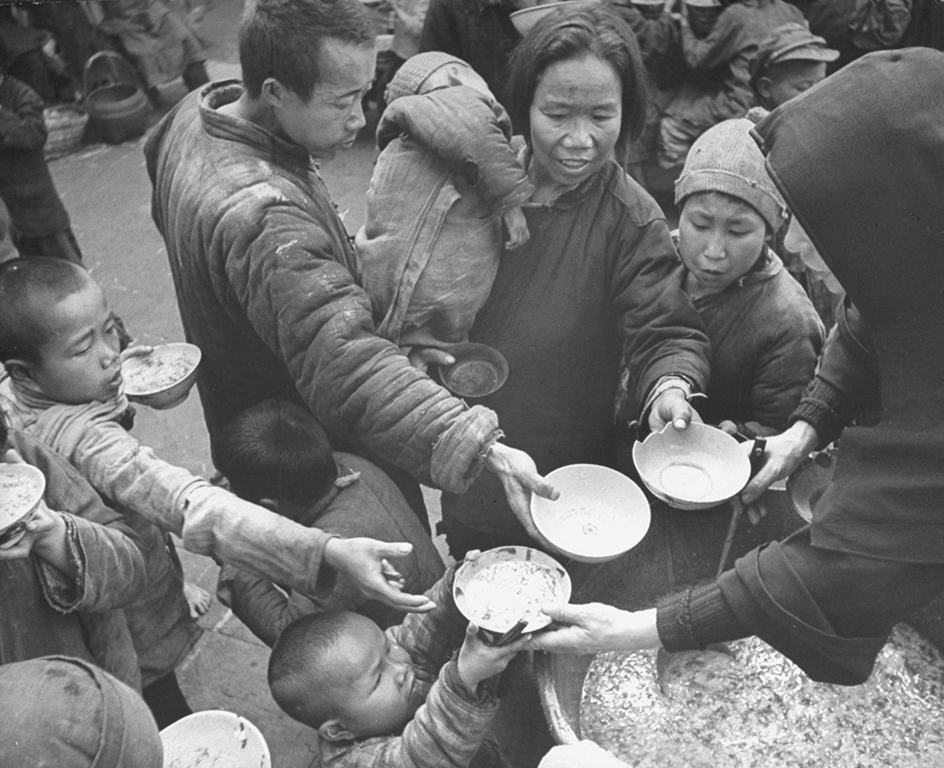
Civil war.
In 1945, the United States sent General George C. Marshall to China to attempt to arrange a political settlement between the Nationalists and the Communists. However, neither the Nationalists nor the Communists believed that they could achieve their goals by coming to terms with one another. In mid-1946, full-scale fighting began.

The superior military tactics of the Communists and the social revolution they had started in the countryside gradually turned the tide against the Nationalists. After capturing Tianjin and Beijing in January 1949, Mao Zedong’s armies crossed the Yangtze River and drove the Nationalists toward southern China. On Oct. 1, 1949, Mao proclaimed the establishment in Beijing of the People’s Republic of China. In December, Chiang Kai-shek and his followers fled to the island of Taiwan.
The beginning of Communist rule
took place under the direction of Mao Zedong, the chairman of the Communist Party. Premier Zhou Enlai directed all government departments and ministries. Military, technical, and economic aid from the Soviet Union helped support the new government. From 1949 to 1952, the new government firmly established its control over China and worked to help the nation’s economy recover.

The new Communist government seized farmland from landlords and redistributed it among the peasants. Angry mobs, resentful of the way landlords had mistreated them, killed many of the landlords. Estimates of the number of landlords killed range from 200,000 to several million.
In 1953, China began its First Five-Year Plan for economic development. From 1953 to 1957, Chinese industry grew at the rapid rate of about 15 percent a year. By 1957, the Communists had brought all important industries under the control of the government. In addition, peasants were forced or persuaded to combine their landholdings into agricultural cooperatives. However, agricultural production increased much more slowly than industrial output.
The Great Leap Forward,
launched in 1958, was a plan designed to accelerate China’s economic development. It was based on Mao’s belief that human willpower and effort could overcome all obstacles. Thus, the government tried to speed development by greatly increasing the number of workers and their hours while ignoring China’s lack of capital and modern technology. It combined the agricultural cooperatives into huge communes to improve the efficiency of farmworkers. The plan also set up many small factories and increased the industrial work force. Laborers worked long hours, sometimes sleeping at their machines.
The Great Leap Forward damaged the economy and caused the worst famine in the country’s history. From 1959 to 1961, food shortages and economic dislocation caused by government policies cost the lives of an estimated 20 million to 30 million people. By 1962, the economy began to recover. However, the Chinese had not solved the problem of achieving economic growth while maintaining the ideals of Communism.
Disagreement over this issue produced a major split in the Communist Party between radicals and revisionists. The radicals called for China to strive for a classless society in which everyone would work selflessly for the common good. Revisionists stressed that division of labor was necessary for economic development. They believed that the policies of the radicals were unrealistic and hampered the modernization of China.
Break with the Soviet Union.
Friendly relations between China and the Soviet Union ended in the early 1960’s. China had criticized the Soviets as early as 1956 for their policy of “peaceful coexistence” with the West. Unlike the Soviets, the Chinese believed that war with the West was inevitable. They also accused the Soviet Union of betraying the aims of Communism. In 1960, the Soviet Union stopped giving assistance to China. In 1962, it refused to support China in a border war with India. In 1963, the Soviet Union signed a nuclear test ban treaty with the United States and the United Kingdom. The Chinese then broke off relations with the Soviets, whom they accused of joining an anti-Chinese plot.
The Cultural Revolution.
In 1966, Mao Zedong gave his support to the radicals in the Communist Party. Mao thus began what he called the Great Proletarian Cultural Revolution, a drive to enforce strict Communist principles and to rid China of revisionists. The radicals accused many top party and government officials of failing to follow Communist ideals and removed them from their positions. Students and other young people formed semimilitary organizations called the Red Guards. They demonstrated in the major cities against revisionists, intellectuals, scientists, and others whom they called anti-Maoists. Most universities were closed from 1966 to 1970. Radicals seized control of many provincial and city governments. Violence frequently broke out as competing radical groups struggled for power.
Mao’s attempt to put China back on a revolutionary path damaged the government and economy so severely that he had to call out the army in 1967 to restore order. By 1970, the Communist Party, the government, and the educational system had begun to resume their normal activities. However, the conflict between radicals and revisionists within the party continued.
Improved relations with the West.
During the early 1970’s, Canada, Japan, and several other nations established diplomatic relations with the People’s Republic of China. The United States continued officially to recognize only the Nationalist government on Taiwan. But in 1971, the United Nations (UN) voted to admit the People’s Republic in place of Taiwan.
In 1972, U.S. President Richard M. Nixon traveled to China and met with Premier Zhou Enlai and Communist Party chairman Mao Zedong. During Nixon’s visit, the United States and China signed the Shanghai Communiqué, which looked forward to the establishment of normal relations. The following year, the two nations sent representatives to serve in each other’s capital.
Deng Xiaoping.
Both Zhou Enlai and Mao Zedong died in 1976. A power struggle followed between radicals led by Mao’s widow, Jiang Qing, and moderates led by Deng Xiaoping. The moderates emerged from the revisionist movement and promoted a more relaxed form of Communism. As a compromise, Hua Guofeng succeeded Zhou as premier and Mao as chairman of the Communist Party. Hua’s government imprisoned Jiang and three other radicals, labeling them the Gang of Four.
In 1977, Deng Xiaoping became vice premier and vice chairman of the Communist Party. On Jan. 1, 1979, China and the United States established normal diplomatic relations.
By 1980, Hua had lost most of his power, and Deng had become China’s most powerful leader. Hua resigned as premier in 1980 and as party chairman in 1981. Deng helped Zhao Ziyang become premier and also helped Hu Yaobang become chairman of the party. Zhao and Hu were moderates.
Deng resigned as vice premier in 1980. In 1982, the party’s new constitution abolished Deng’s post of vice chairman and Hu’s post of chairman. It created the position of general secretary as the top party post, and Hu continued in that office. However, Deng remained China’s most influential leader.
Deng and the other moderates sought to reduce the people’s admiration of Mao. They praised Mao’s leadership but said that not all his policies should be followed. The moderates dismantled the communes and allowed farmers to market surplus produce after providing a share to the state.They increased trade and cultural contact with foreign countries and set out to modernize China’s economy with technical help from abroad.
Protests.
In 1959, Tibetans had tried unsuccessfully to revolt against Chinese rule. Tibet’s spiritual leader, the Dalai Lama, fled into exile in India. More Tibetan protests took place in the 1980’s. In 1989, tensions between protesters and police turned violent. China sent troops to restore order.
In 1986, many Chinese university students began demanding increased freedom of speech and a greater voice in the selection of officials. Students held demonstrations in a number of cities to promote their demands. In 1987, Hu Yaobang was removed from his post of Communist Party general secretary. Conservative leaders had criticized Hu for his liberal views on freedom of expression and political reform. Zhao Ziyang then became general secretary of the party. Li Peng became premier in 1988.
Hu Yaobang died in 1989. University students held marches to honor Hu and mourn his death. They called for a reevaluation of Hu by the country’s leaders. These events led to large demonstrations by students and other citizens in Beijing’s Tiananmen Square and on the streets of other Chinese cities. The protesters called for more democracy in China and an end to corruption in government. The military crushed the demonstrations and killed hundreds of protesters. The government later arrested many people suspected of involvement in the pro-democracy movement. The government executed a number of those arrested. In addition, the Communist Party dismissed Zhao Ziyang from his post for not doing more to suppress the pro-democracy movement. Jiang Zemin replaced Zhao as general secretary.
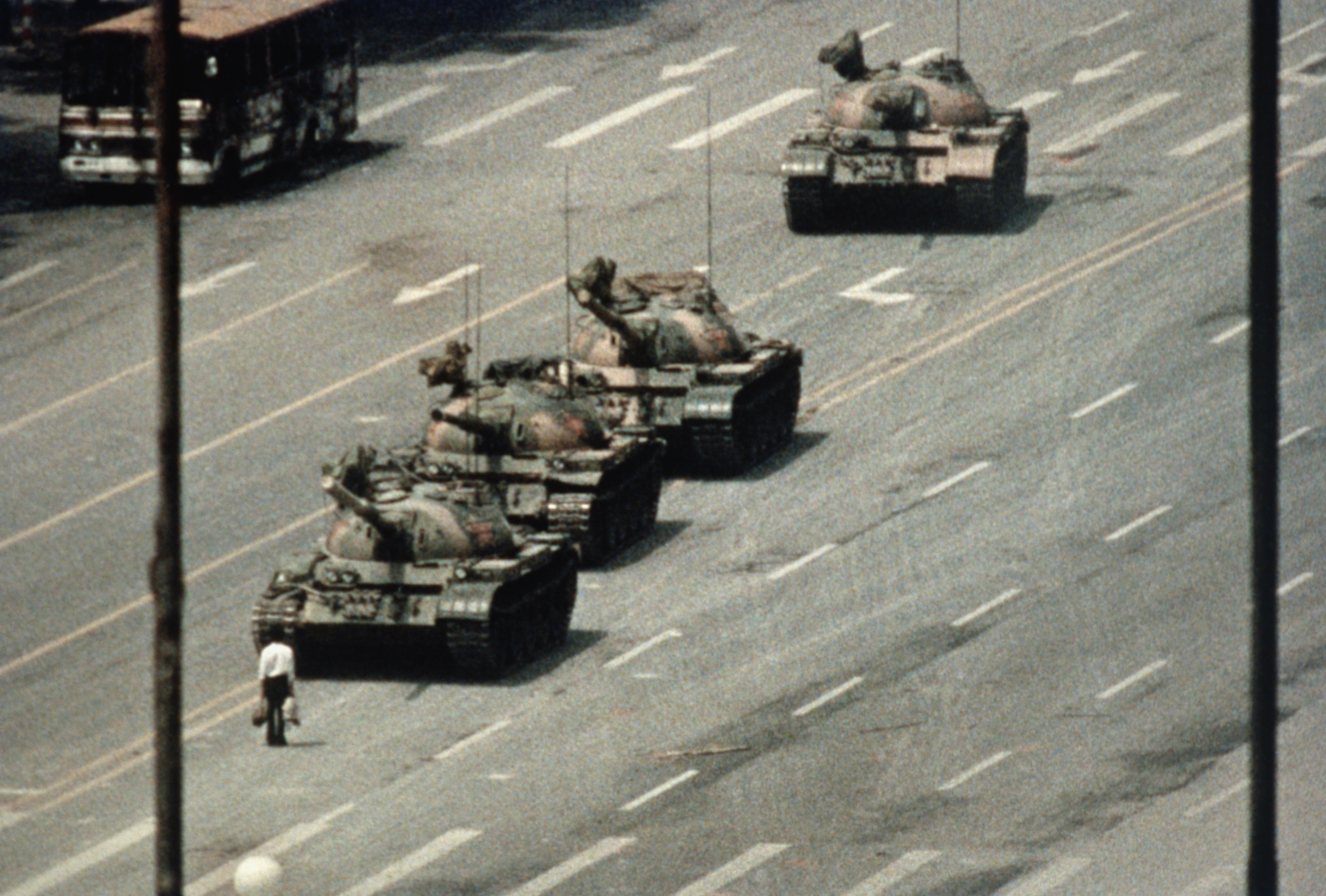
Also in 1989, officials of China and the Soviet Union met to improve relations. When the Soviet Union broke apart in 1991, China established diplomatic relations with the former Soviet republics.
Deng resigned from his remaining party and government posts in 1989 and 1990, but he continued to have influence through the early 1990’s. In 1993, Jiang was named to another high office, the largely ceremonial post of president. Deng died in 1997.
Hong Kong and Macau.
In 1984, China and the United Kingdom signed an agreement regarding the return of Hong Kong to China when the United Kingdom’s lease expired in 1997. China agreed that Hong Kong would retain a high degree of autonomy (self-rule) and keep its free-enterprise economy for 50 years, or until 2047. In 1990, the Chinese government approved the Basic Law, the new framework for Hong Kong’s administration. On July 1, 1997, Hong Kong became a special administrative region of China.

In 1987, China and Portugal signed a similar agreement for the return of Macau to Chinese administration. On Dec. 20, 1999, Macau became the second special administrative region of China.
Challenges and achievements.
In 1998, Zhu Rongji succeeded Li Peng as premier. Zhu had been a vice premier in charge of economic policy. Li Peng was named chairman of China’s national legislature.
In 2001, China became a member of the World Trade Organization, which promotes international trade. China’s entry into the organization marked progress in freeing the Chinese economy from government control.
In late 2002, a respiratory disease called SARS (severe acute respiratory syndrome) broke out in southern China and spread rapidly. Cases were soon reported in other countries, but most of the infections and deaths occurred in China. Although the virus was contained by 2004, the outbreak caused nearly 800 deaths worldwide.
Jiang Zemin stepped down as general secretary of China’s Communist Party in November 2002, as president in 2003, and as head of China’s military in 2004. Hu Jintao replaced him in all three positions. Also in 2003, Wen Jiabao succeeded Zhu Rongji as premier.
In March 2008, protests in Tibet calling for independence turned into riots, and the Chinese government again sent troops to restore order. Wen blamed the Dalai Lama for the unrest and called for him to resign. In May, a powerful earthquake struck south-central China, killing at least 70,000 people.
In August 2008, Beijing hosted the Summer Olympic Games. China completed major construction projects for the games, including a massive performance hall; a huge new terminal at Beijing Capital International Airport; and Beijing National Stadium, nicknamed “the Bird’s Nest.” For many Chinese people, the games became a symbol of national pride.
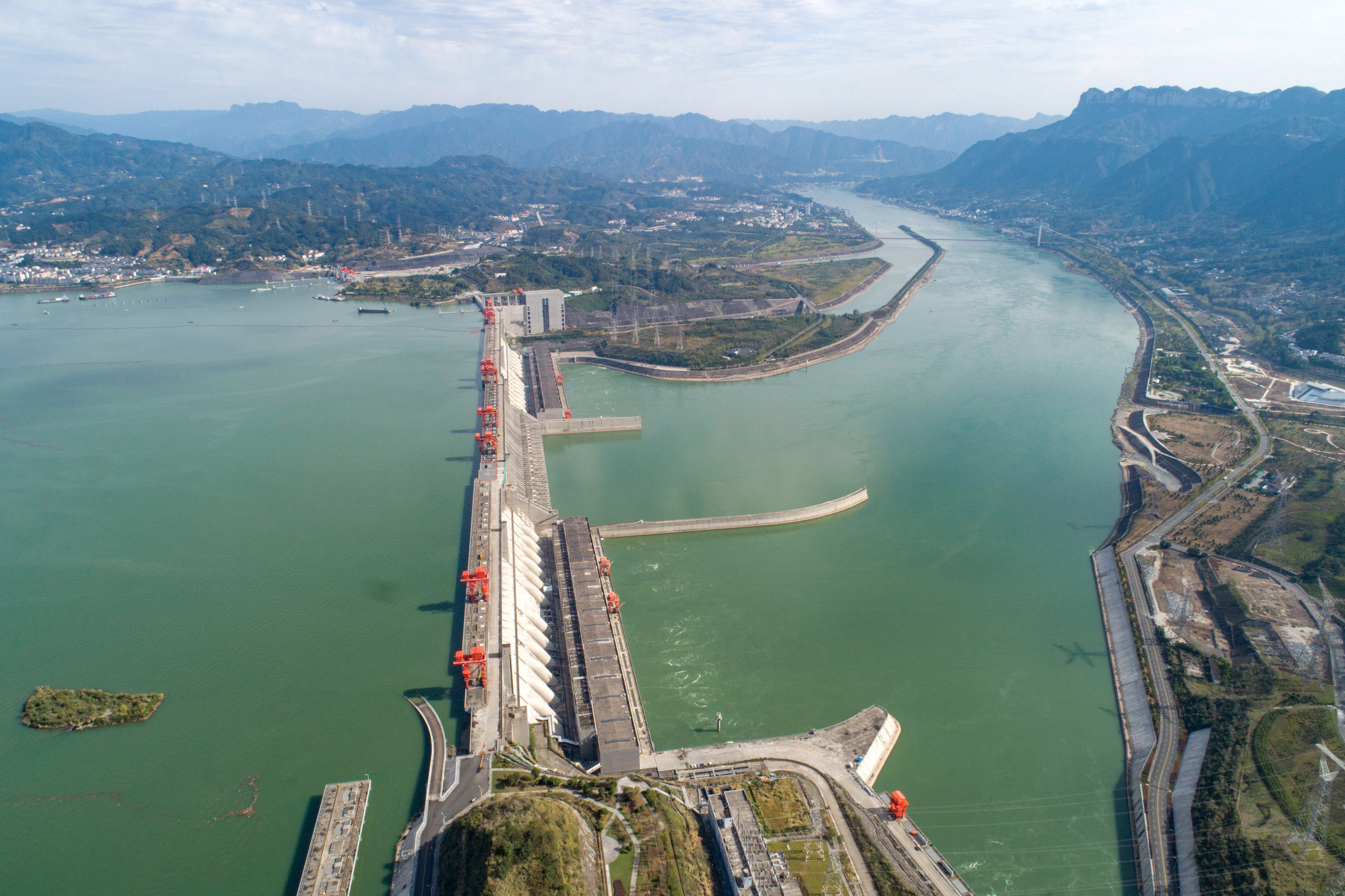
Recent developments.
In 2012, Xi Jinping succeeded Hu Jintao as general secretary of the Communist Party and head of the military. Xi succeeded Hu as president in 2013, and Li Keqiang became premier. As president, Xi launched a major crackdown on corruption, targeting people at all levels of government. He was reelected as general secretary in 2017 and as president in 2018.
In the 2010’s and 2020’s, China heightened international tensions by expanding its naval operations in the South China Sea. China claimed ownership of the entire region despite competing claims from neighboring nations. China reclaimed land from the sea and built artificial islands in such disputed areas as the Spratly Islands. In 2016, a UN-appointed tribunal ruled that the region was neutral international territory, and that China’s claim to exclusive control over much of the South China Sea was unlawful. The Chinese government opposed the ruling and continued building military bases on the disputed islands.
In 2013, China introduced the Belt and Road Initiative, a program through which the Chinese government arranges for Chinese loans and companies to help other countries build roads, ports, and other infrastructure projects. Some critics claimed that the program gave China too much influence and control in the nations that accepted its aid.
In mid-2019, more than a million citizens of Hong Kong demonstrated against a proposed bill that would have allowed individuals accused of criminal action in Hong Kong to be extradited (handed over) to stand trial in courts in China. The bill was later withdrawn, but some demonstrators continued to protest against interference with Hong Kong’s autonomy, and to call for democratic reform.
In mid-2020, China bypassed the Hong Kong legislature and imposed a new security law on Hong Kong. The law restricted the actions of pro-democracy advocates. It forbade activity promoting secession (formal withdrawal), subversion (overthrow), terrorism, and foreign interference in Hong Kong. It also allowed China’s national security agencies to formally establish bases in the city. The Chinese government claimed the law was needed to protect national security. However, critics insisted it was meant to weaken Hong Kong’s autonomy. Later in 2020, China passed a resolution allowing the executive branch of Hong Kong’s city government to dismiss any politician it views as a threat to national security. In 2021, the Chinese government passed additional legislation that reduced the number of members of Hong Kong’s legislature who are directly elected by the people. It also required all candidates to be approved as “patriotic” in their support of China’s government before they can run for office.
In late 2019, a contagious respiratory disease broke out in Wuhan and quickly became a pandemic (worldwide epidemic). The new disease, caused by a coronavirus similar to the one that causes SARS, was later named COVID-19. By February 2020, tens of thousands of people in China had become infected with the new coronavirus, and more people had died of COVID-19 than had died in the 2002-2003 SARS outbreak. Aggressive government measures to contain the disease included restricting people’s movements, suspending public transportation, closing schools and workplaces, and banning public gatherings. Authorities also built new medical facilities and isolated people with COVID-19. Such strong actions significantly reduced new cases of the disease in China, and authorities eased some restrictions by early summer. However, outbreaks continued to occur.
In 2021, concern grew over the threat posed by new, more contagious variants (forms) of the coronavirus. In 2022, the government used strict measures to isolate and contain COVID-19 outbreaks in several cities, including China’s largest city, Shanghai. In November, after protests against restrictive COVID-19 policies broke out across China, the government eased many of the restrictions. Its new policy resulted in a sharp increase in infections, but case numbers stabilized by the spring of 2023. By late 2023, there had been more than 99 million confirmed cases of COVID-19 in China, and over 120,000 confirmed deaths from the disease.

The National Party Congress of the Chinese Communist Party met in October 2022. It reelected Xi Jinping to serve as the party’s general secretary for a third five-year term. In March 2023, the National People’s Congress reelected Xi to a third five-year term as president.
